People often ask me what public courses to play in Chicago. My response is always the same, and usually surprising to the inquirer – Ravisloe C.C. in Homewood, IL. It’s a terrific blend of golden age architecture, fun and value that in my mind sets it apart from the other options in the Chicagoland area. Ravisloe won’t wow you with its ritzy service or amenities, but what you will find is a classic Donald Ross course that showcases his design brilliance by being extremely playable for a beginner while still challenging for a great player.
History
Ravisloe wasn’t always accessible to the public. The club was founded in 1901 by civic and business leaders who were members of The Standard Club of Chicago. Over the years, it attracted a strong Jewish membership, as did Idlewild Country Club, just down the road. It was a thriving private club for nearly 100 years, known both for its great golf and social scene.
Ravisloe also has a rich architectural history. The original course was laid out in 1901 by Theodore Moreau (later of the team of Langford & Moreau) and James Foulis (of the famed Foulis brothers). In 1910, land was added and William Watson was brought in to do an update. Finally, in 1916 Donald Ross made further extensive changes during his Chicago Tour which included projects such as Exmoor C.C., Beverly C.C., Skokie C.C., Calumet C.C. and Old Elm Club. Ross continued to consult and refine until 1924, and the course also received attention from William Langford and Theodore Moreau. Golden Age features and feels still exist across the course today.
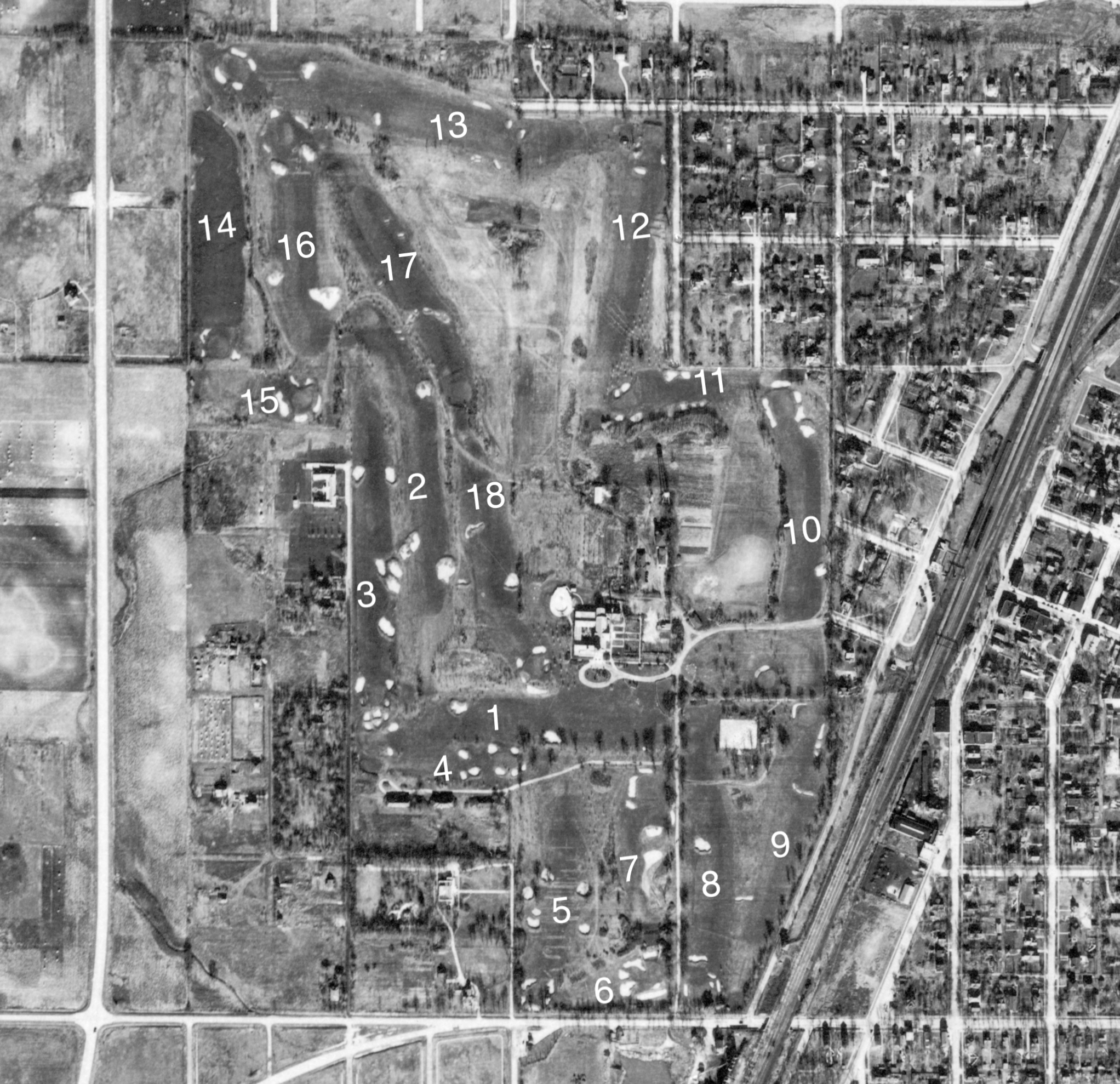
Ravisloe C.C. in 1938 - Photo Credit: @bottomgroove
In 2001 architect Dave Esler was brought in and Ravisloe underwent a restoration. He did a terrific job restoring the bunkering and keeping the course close to its original design. Looking at aerials of Ravisloe from 1938 and today, it’s hard to find many differences from Ross’s original design. There are fewer bunkers than originally, but those that remain are both boldly designed and strategically placed.
The Homewood area fell on hard times, and the abundance of good golf in the area didn’t allow Ravisloe to succeed as a private club. Within a stone’s throw on Chicago’s south side are Olympia Fields C.C., Flossmoor C.C., Calumet C.C., Idlewild C.C. and Ravisloe – simply too many golf courses for the pool of available members to support. When a large contingent of Jewish members moved to Idlewild en masse, Ravisloe’s fate was sealed.
Fortunately for Chicagoland golfers, instead of being sold for development, it was ultimately purchased by veterinary surgeon Claude Gendreau in early 2009. The new owner quickly turned the club into a public access facility and it immediately became one of Chicago’s best public golf courses. Mr. Gendreau continues to work with Dave Esler and make investments in the course, which is fantastic.
The only troubling aspect about the current state at Ravisloe is the trend toward tree planting. Ross’s distinctive features are in the tree line on several holes already and the plantings continue. We know from vast experience that that direction leads to a poorer golf experience in terms of agronomics and strategic interest. We very much hope that Mr. Gendreau will reverse course and let Esler highlight the Ross in Ravisloe even more.
Over-treeing aside, our recommendation still stands. Ravisloe is the one public course in Chicago that is a must play on a regular basis.
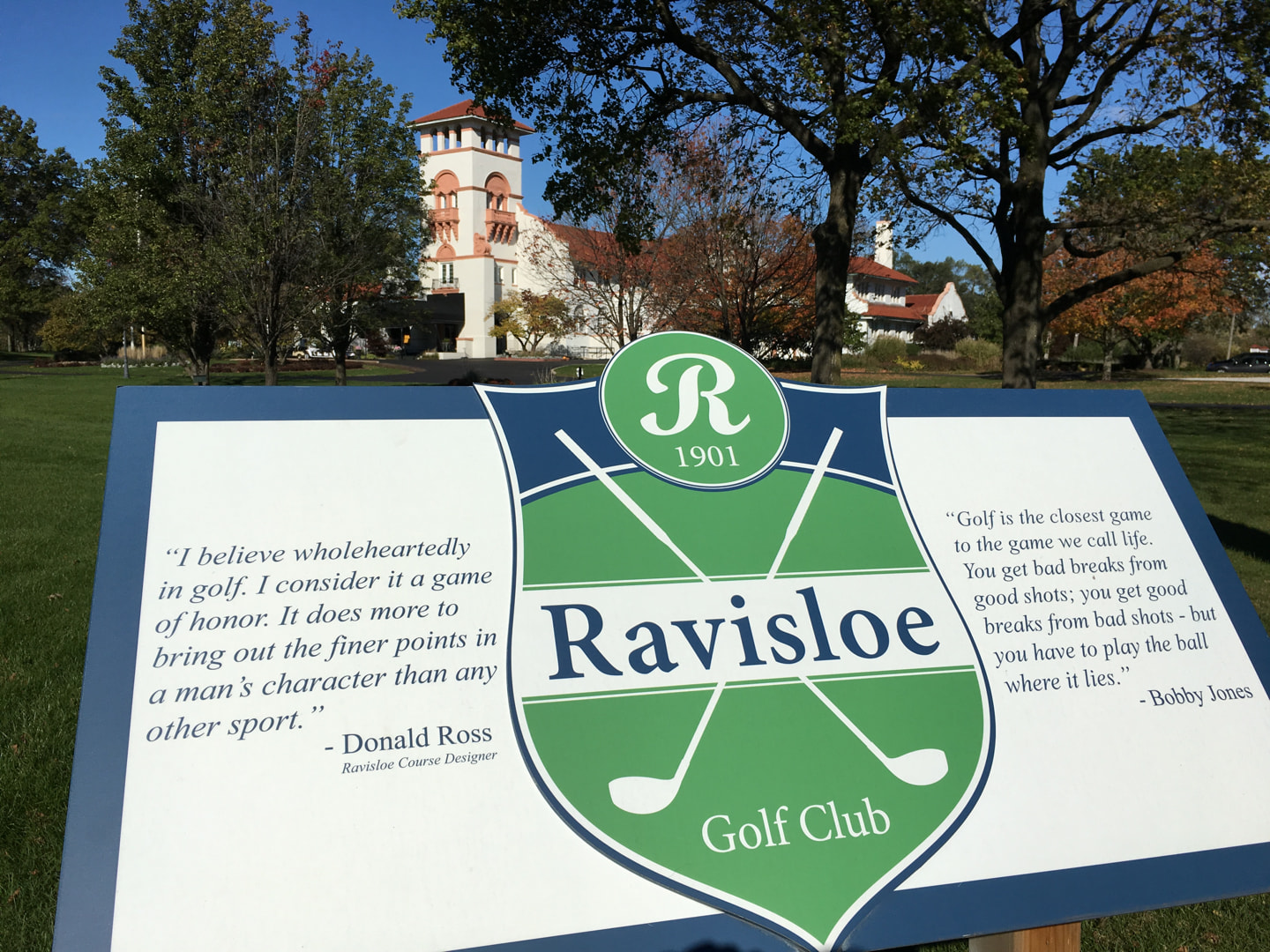
HOLE #1 – 395 yards – par 4
A great opener, the 1st hole at Ravisloe requires a tee shot down the left side of the fairway. It’s wise to hit a ball in the 250-270 yard range in order to avoid the fairway bunker that juts into the right side of the fairway. The approach is a difficult one to a long and narrow green complex that has a severe drop off on the right side.
-
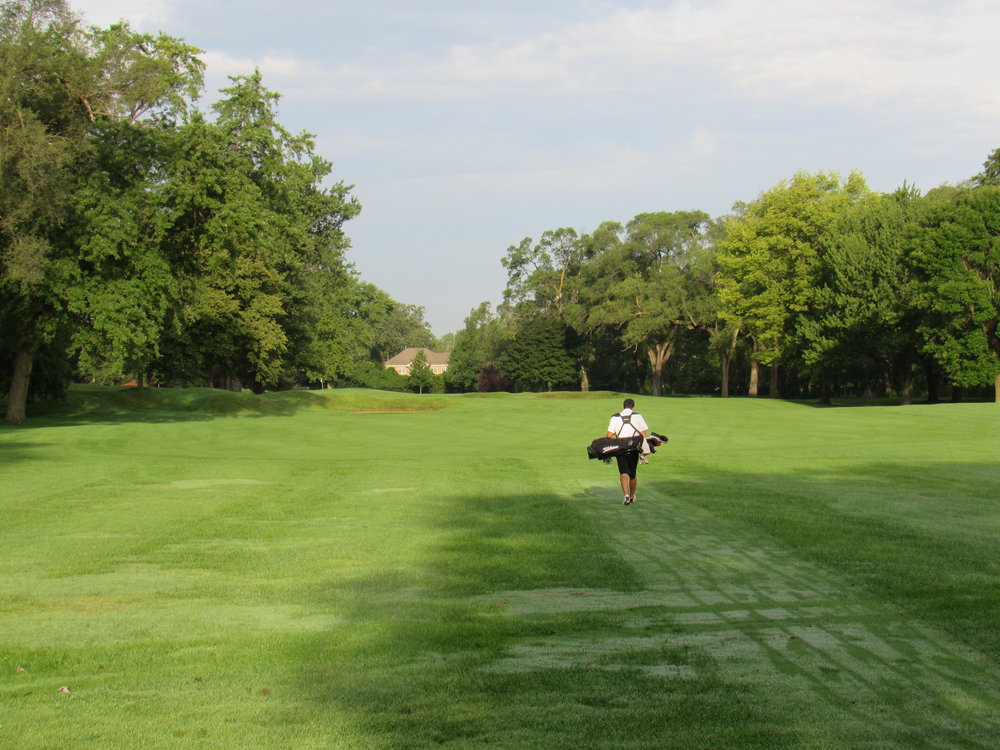
Headed off the tee on Ravisloe's 1st
-
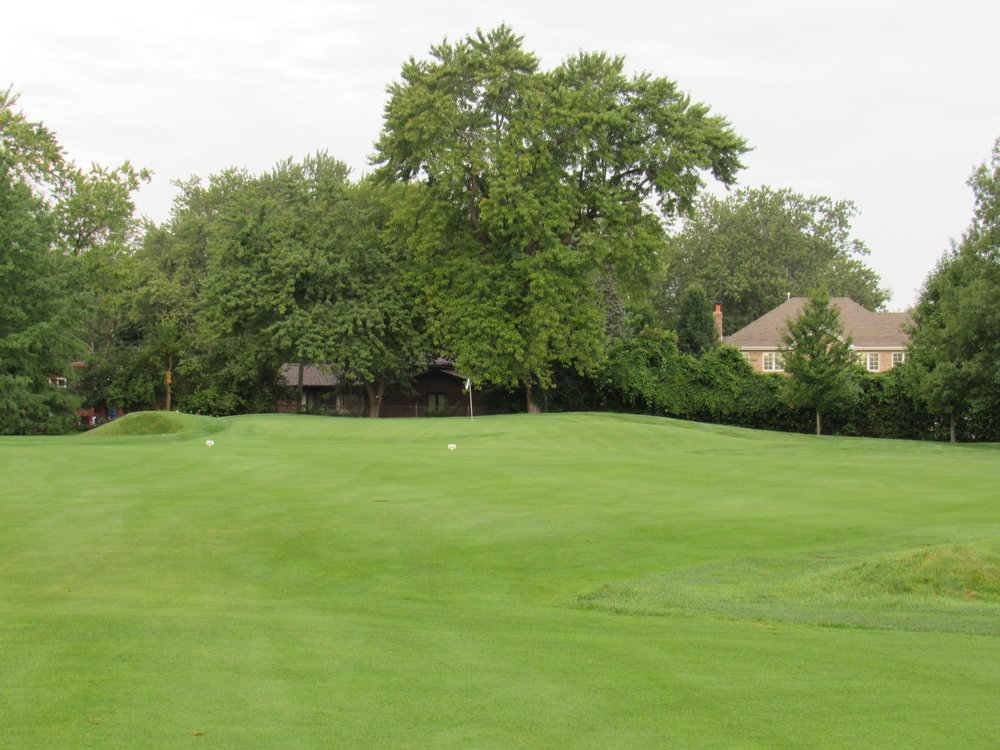
The short iron approach to the green
-
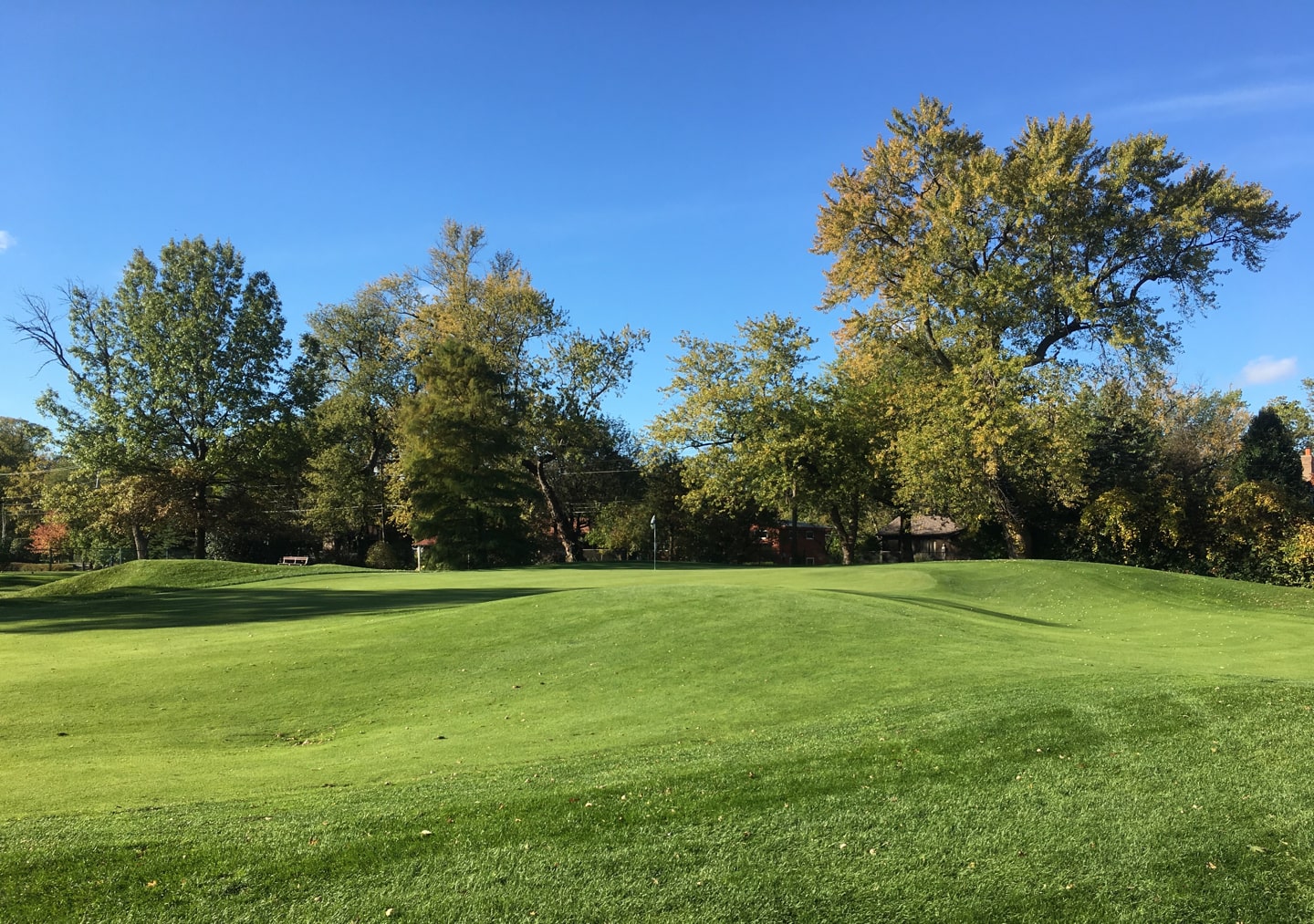
Undulations await on the first green
HOLE #2 – 535 yards – par 5
The first of back-to-back par-5s, the 2nd at Ravisloe requires a draw off the tee to reach the green in two. The 2nd features the first set of Ross’s signature mounding that makes any shot in a challenging one. A good tee shot will leave a fairway wood or long-iron in for longer players, while a shorter hitter will be forced to lay up and decide whether to keep it short or play it past the fairway bunkering on the right.
One of the things I love about this hole is the switchback nature of it as the ideal approach shot to this green is a cut, asking a good player to move the ball right-to-left off the tee before moving it left-to-right on the approach. The green at the 2nd is very challenging, falling off to the left side into a chipping area, and sloping heavily from back-to-front.
-
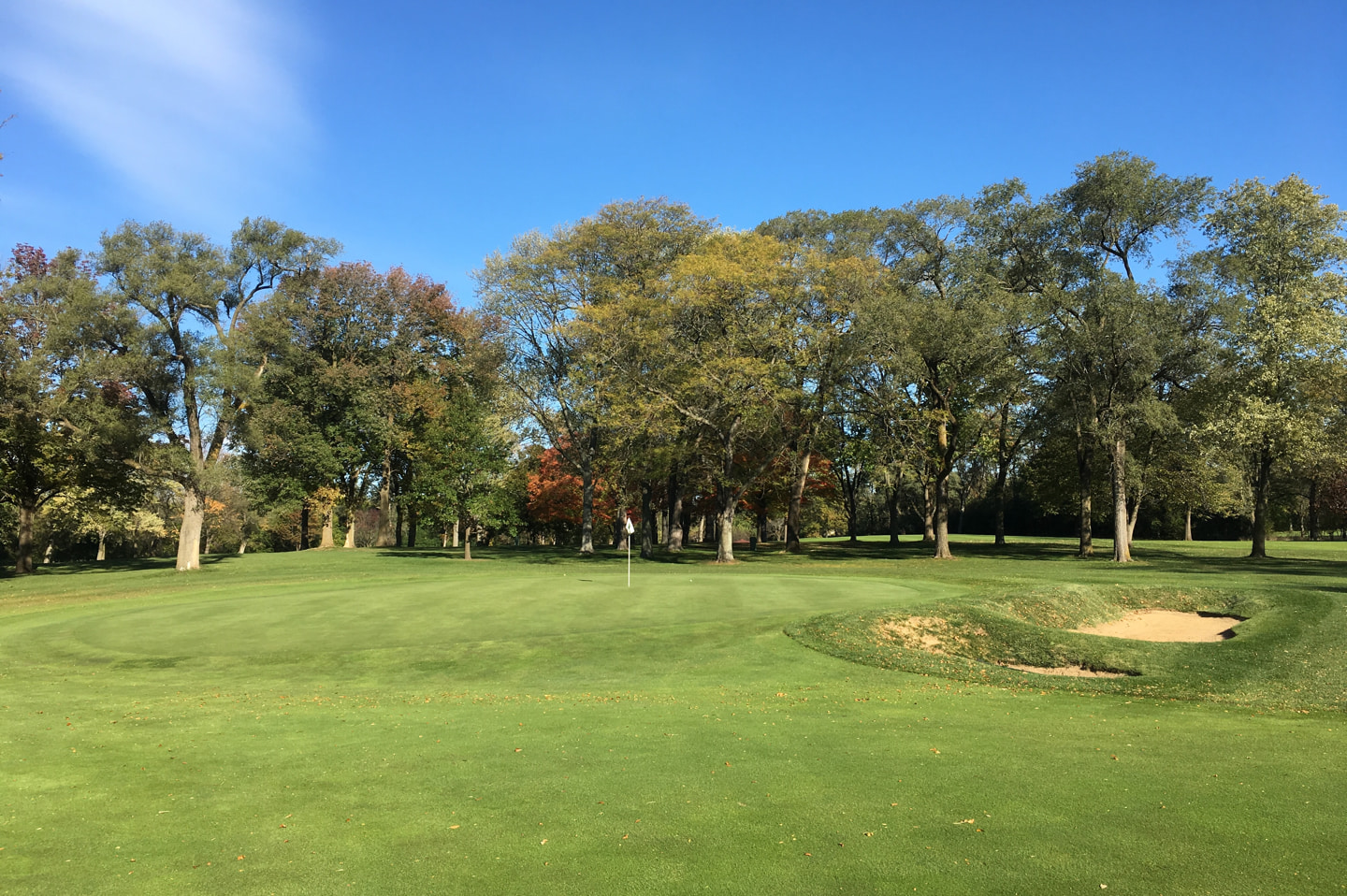
Short of the sloping green on the 2nd
-
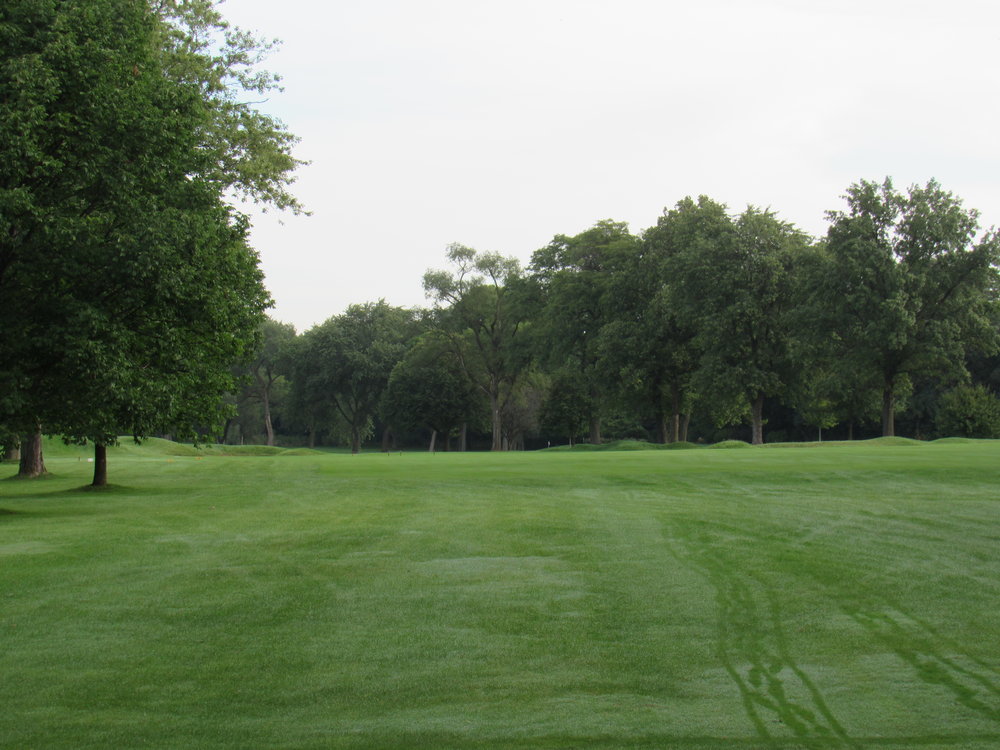
A draw is the favored shape off the tee
-
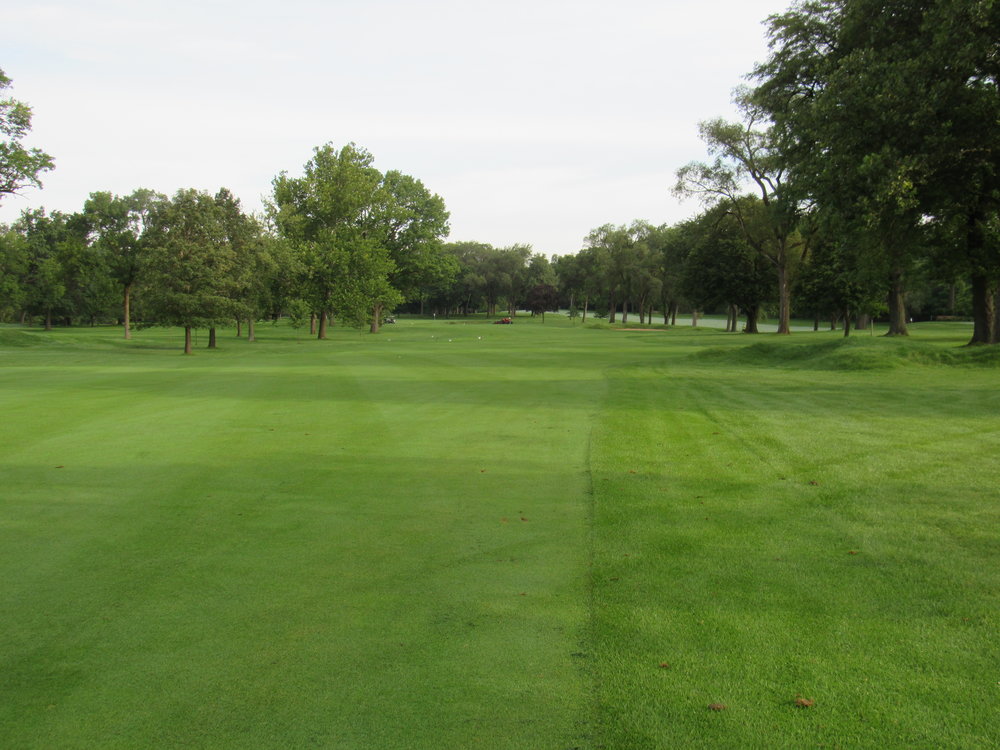
Ross's mounding guards the right side
HOLE #3 – 490 yards – par 5
While the 3rd is also a par-5, the similarities end there. Ross was an expert at examining great players’ ability to move the ball in different directions and his skill is reflected here. At the 3rd hole, the play off the tee is the opposite of the 2nd. In order to get home in two, a left to right tee shot is needed as the hole moves toward out of bounds down the right side. Pulling off that shot leaves a mid-iron into this severely sloped green. Messes left will be forced to lay up and avoid the fairway bunkering. The green complex is one of the best on a par-5 in Chicago as it has 3 distinct tiers and slopes heavily from back to front. It’s important to stay below the hole if you want to have a good look at birdie or eagle as anything pin high or above the hole will be a challenging two putt.
-
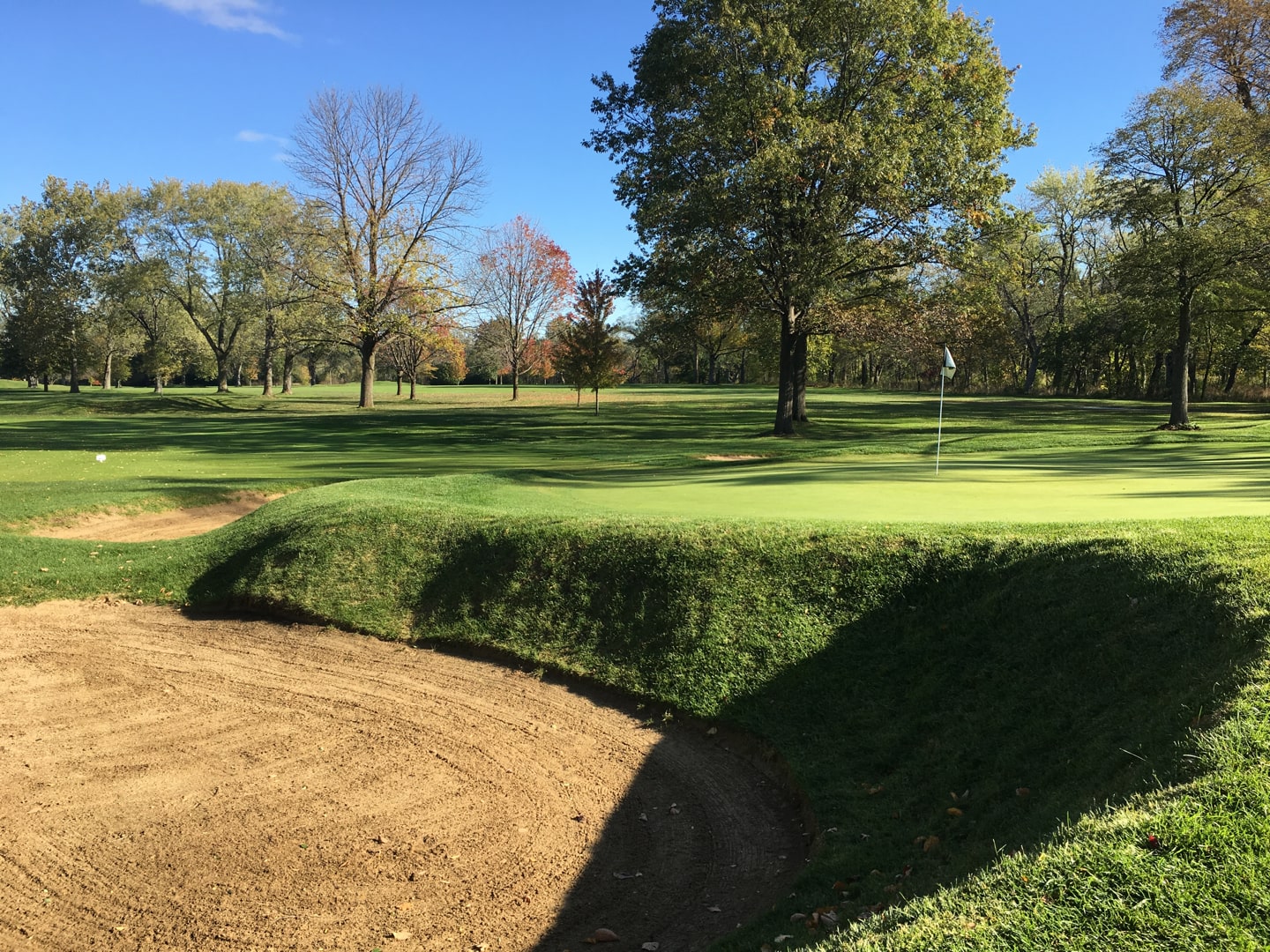
Deep bunkers flank Ravisloe's 3rd green
-
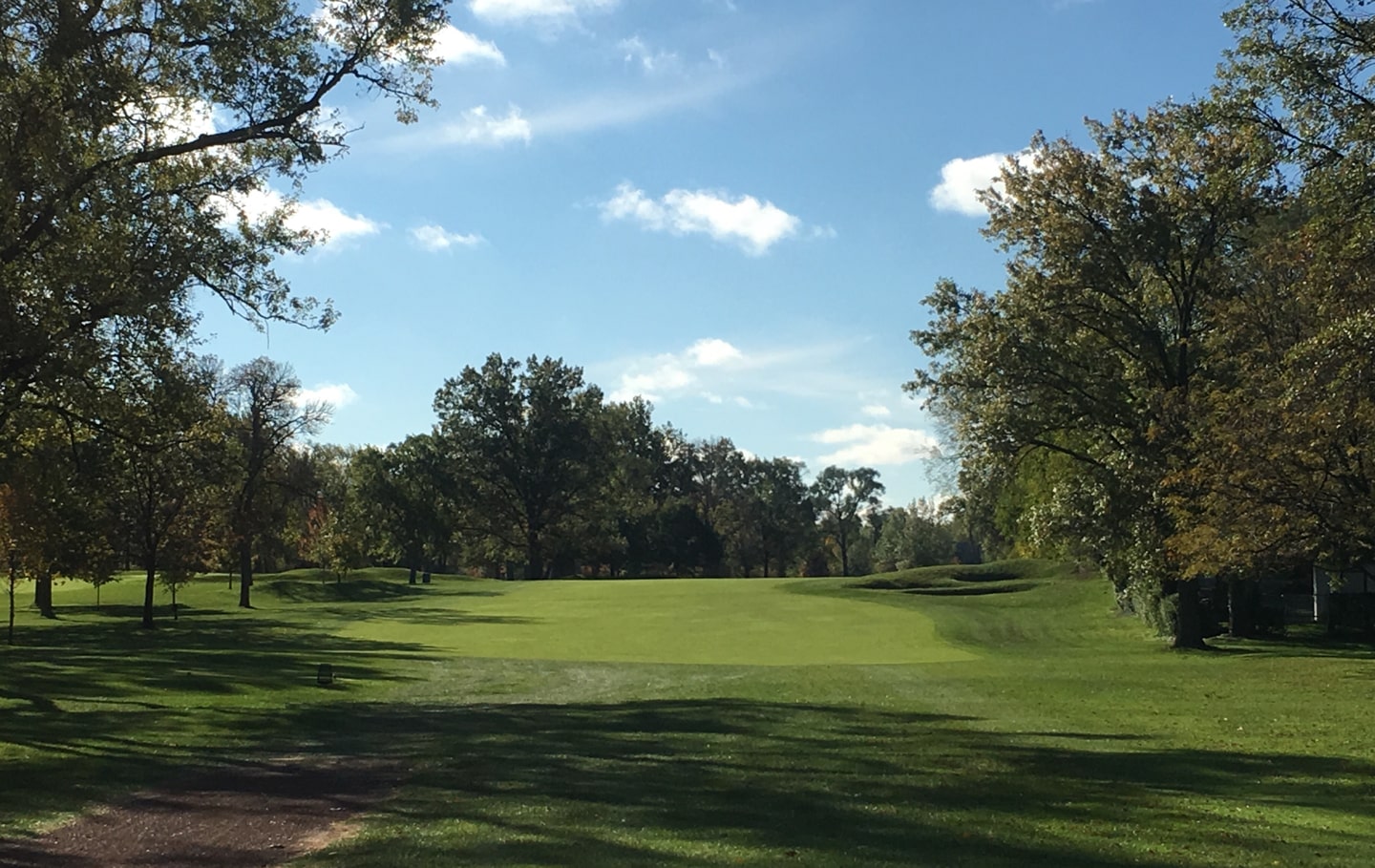
The tee shot on the 3rd requires a left-to-right shape
-
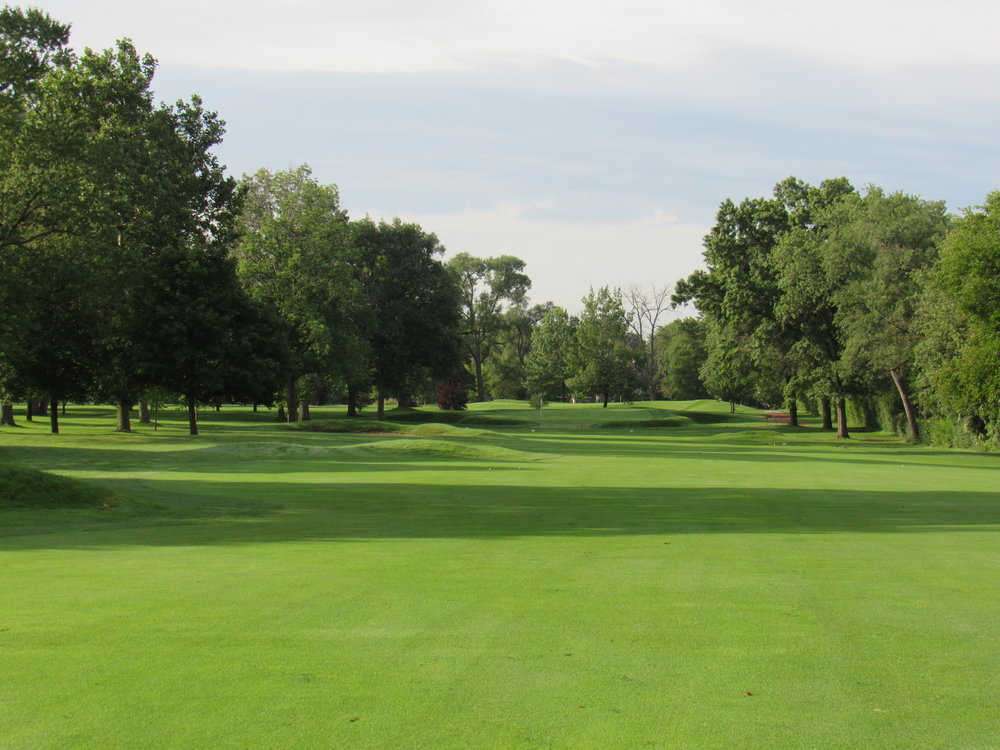
Hazards littered throughout the layup area
-
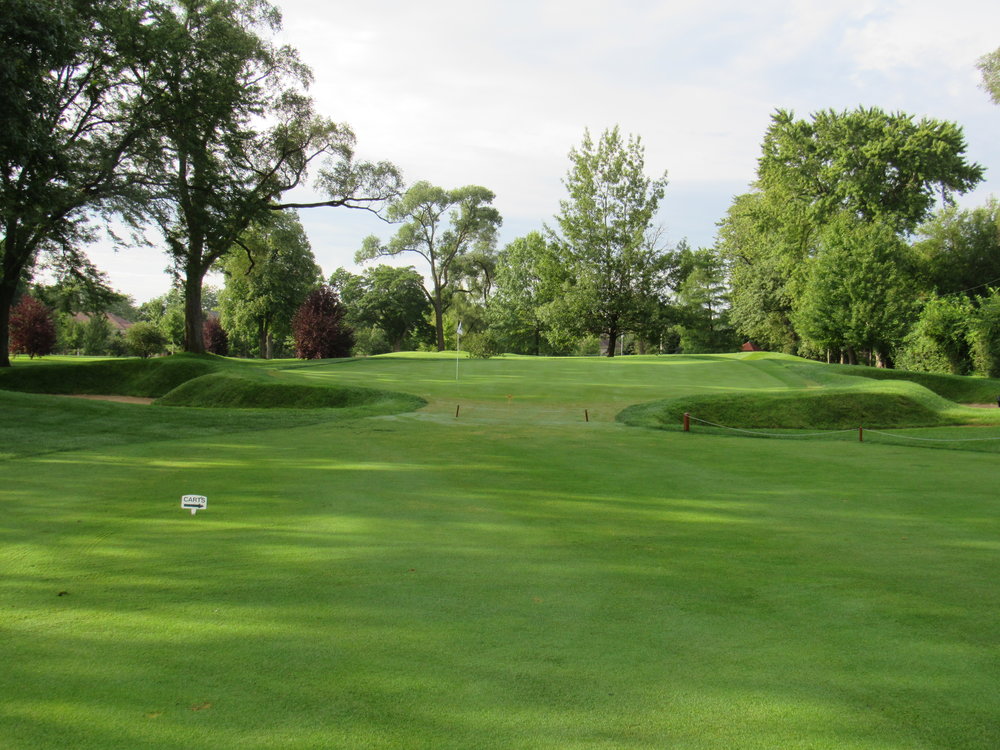
Approaching the green stay below the hole
-

Bold slopes on the 3rd green
HOLE #4 – 181 yards – par 3
Ross eases you into the start at Ravisloe with a few birdie holes before putting your game to the test at the challenging par-3 4th. A mid-iron shot into a narrow and long green guarded by extremely deep bunkering makes this shot a nerve-racking one. If you are unable to hit the green in regulation, your short game will be tested with challenging shots around this pushup green.
-
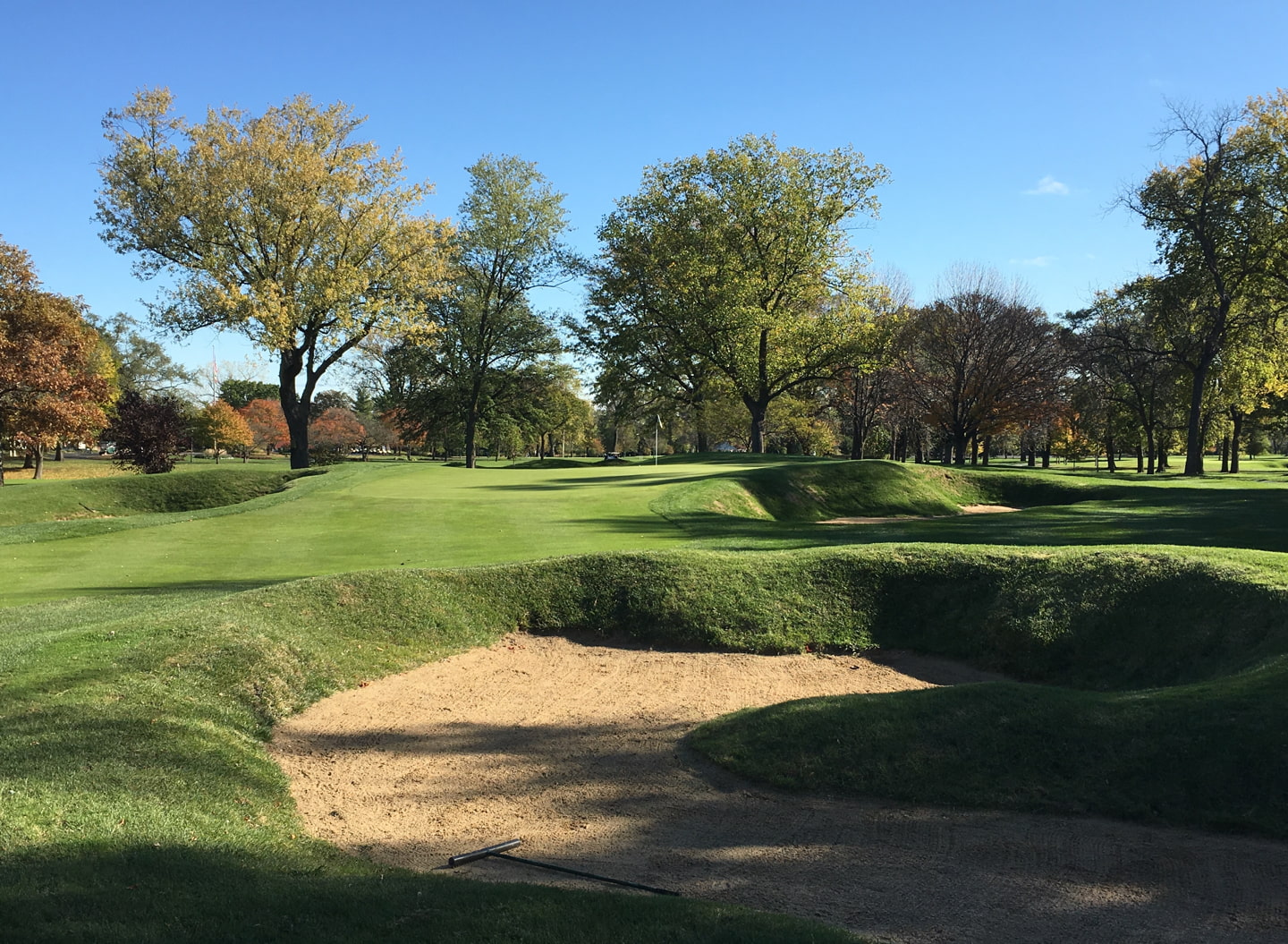
The 4th provides an early demand in a round at Ravisloe
-
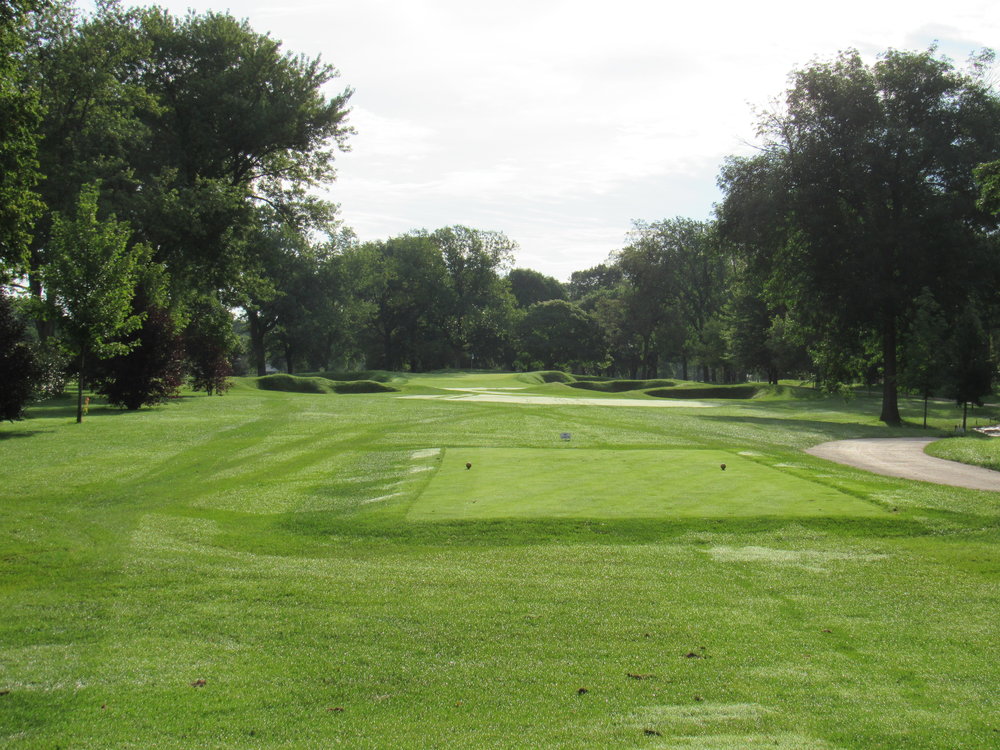
The imposing tee shot at this par-3
-
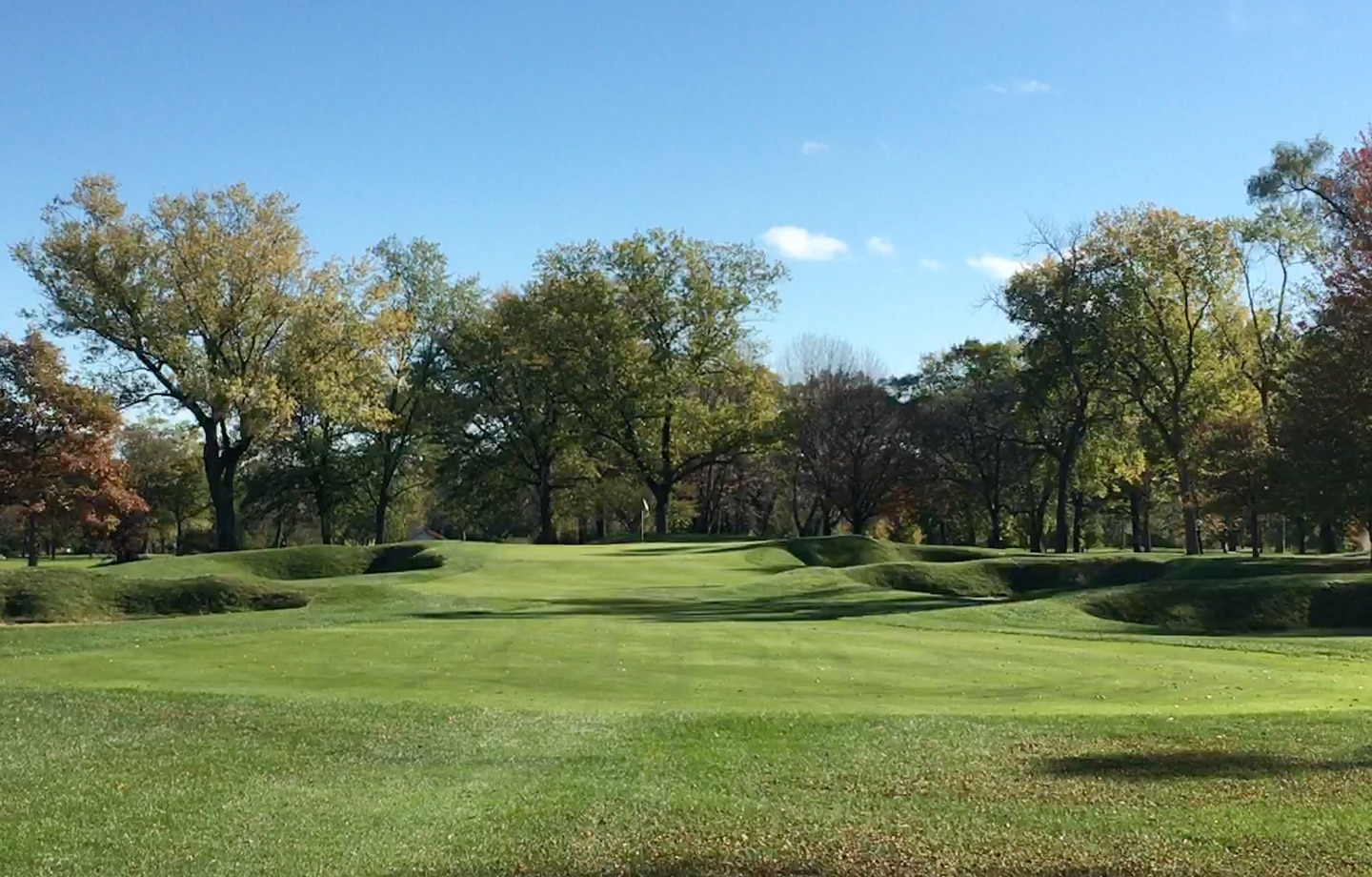
Approach the green with flanking bunkers on guard
-
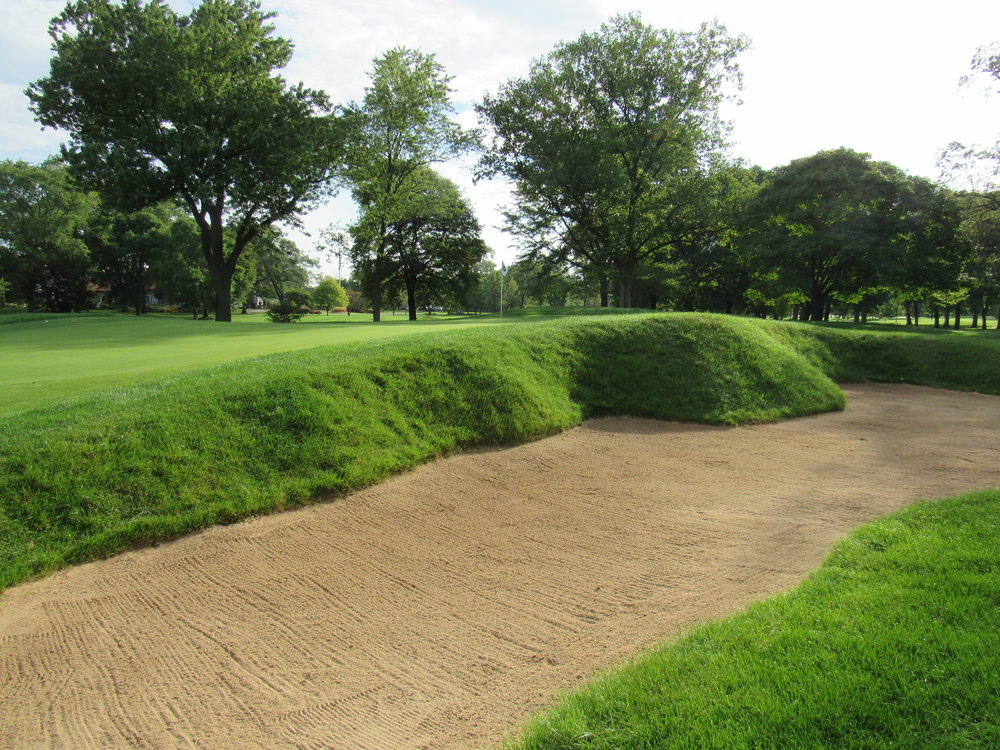
Recovery is tough for wayward shots
-
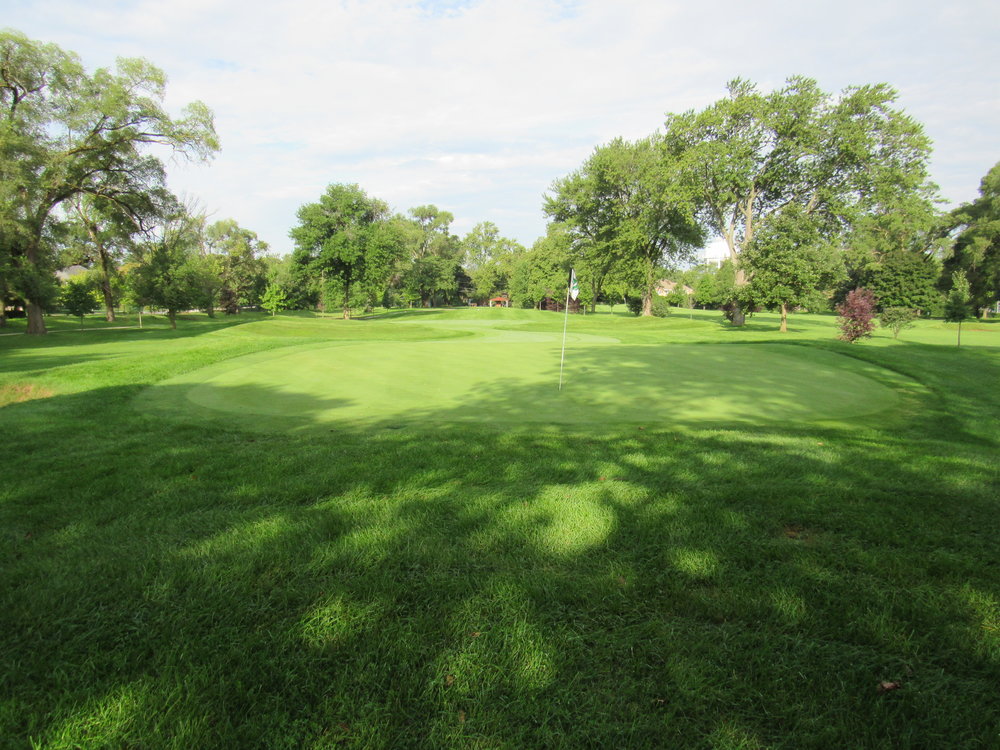
A small target to hit on Ravisloe's 4th
HOLE #5 – 315 yards – par 4
While the 5th may look easy on the scorecard, this hole gives players fits. The smart play on the short par-4 is a 210 yard shot off the tee. A player that can move the ball left to right can be more aggressive, but Ross employed some great cross bunkers that can make for a very difficult and awkward shot into the tough green if you find yourself in one. A layup will leave a wedge shot into a pushup green that is guarded by deep bunkers and out of bounds behind.
-
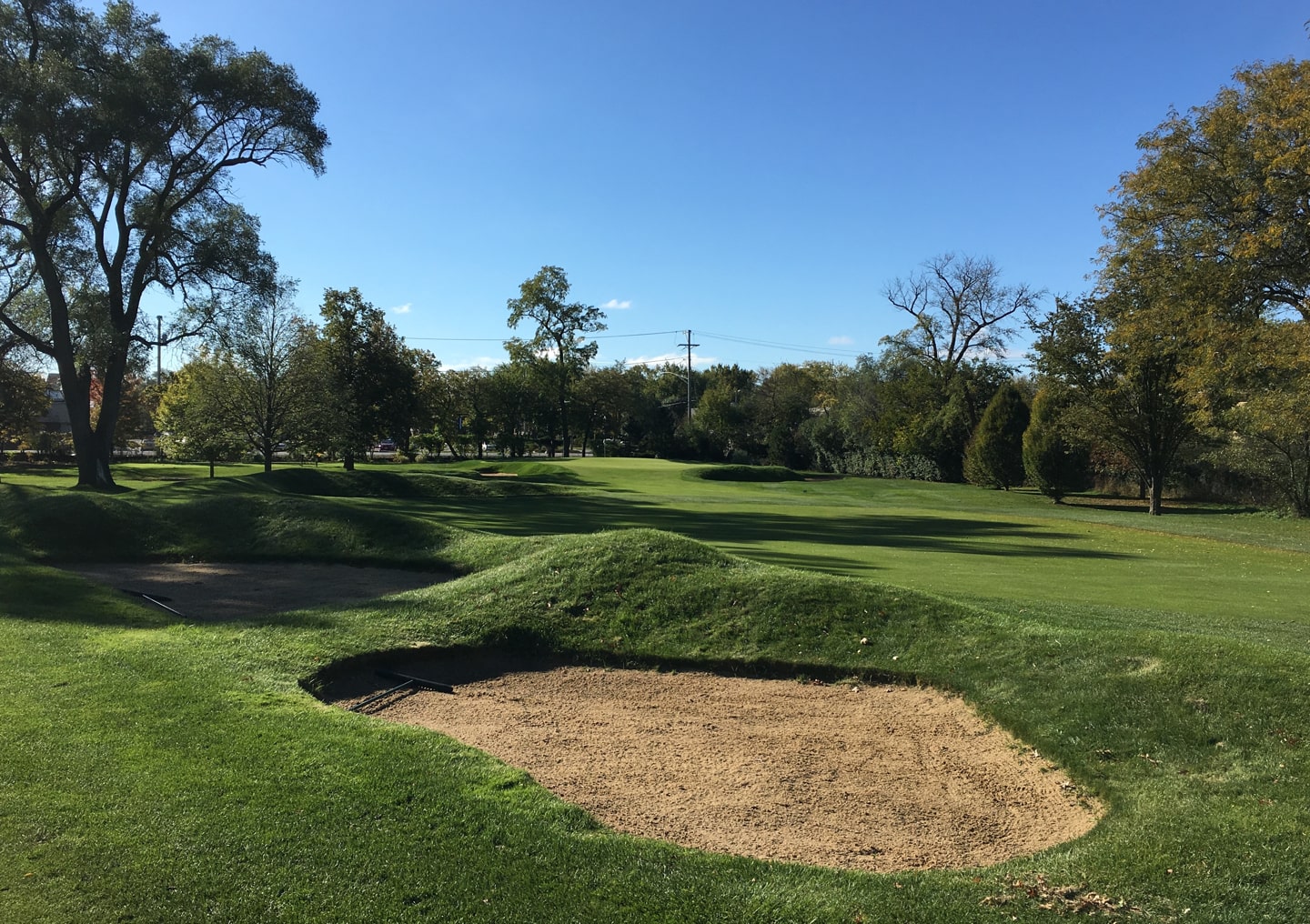
Ross's bunkering encroaching from the left
-
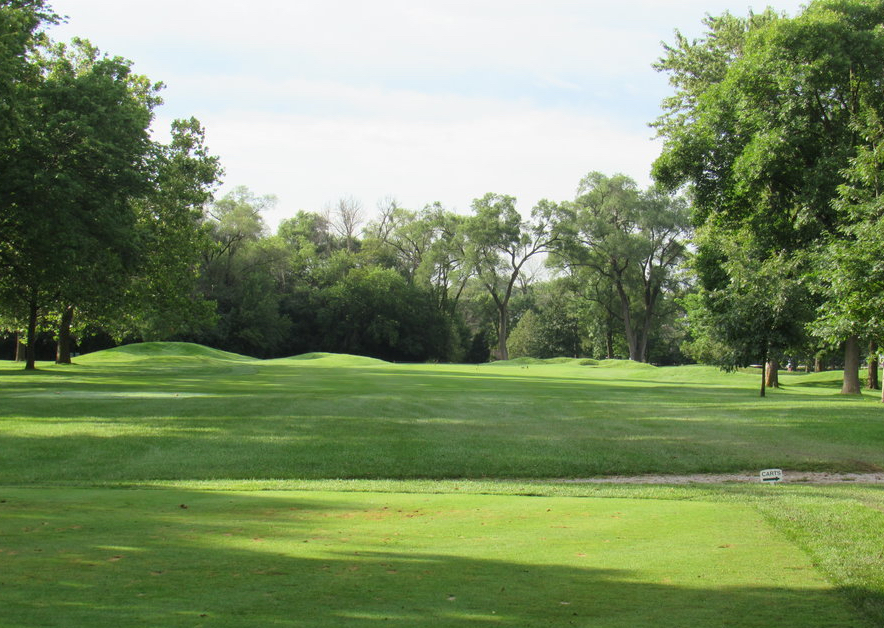
A left-to-right tee shot is ideal on the par-4 5th
-
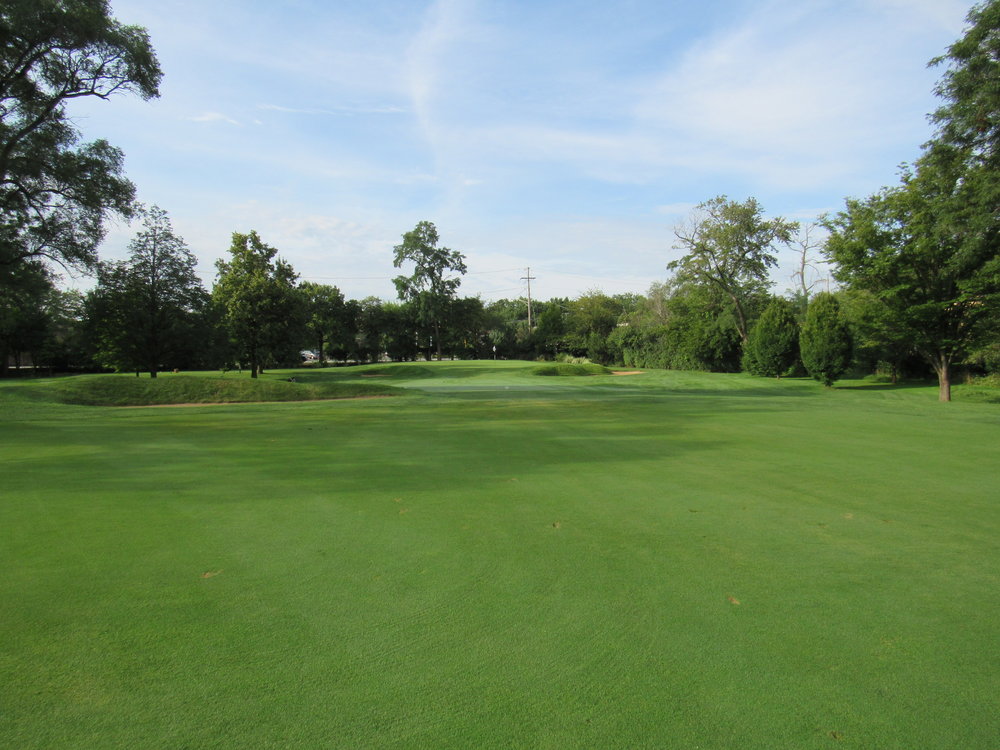
Distance control is critical with OB behind the 5th green
HOLE #6 – 135 yards – par 3
Following the short par-4 5th, players are faced with another test of their wedge game at the par-3 6th. The small but undulated green pus a premium on paying close attention to the wind, distance and most importantly, spin control as it’s easy to spin it off the heavily sloped green.
-
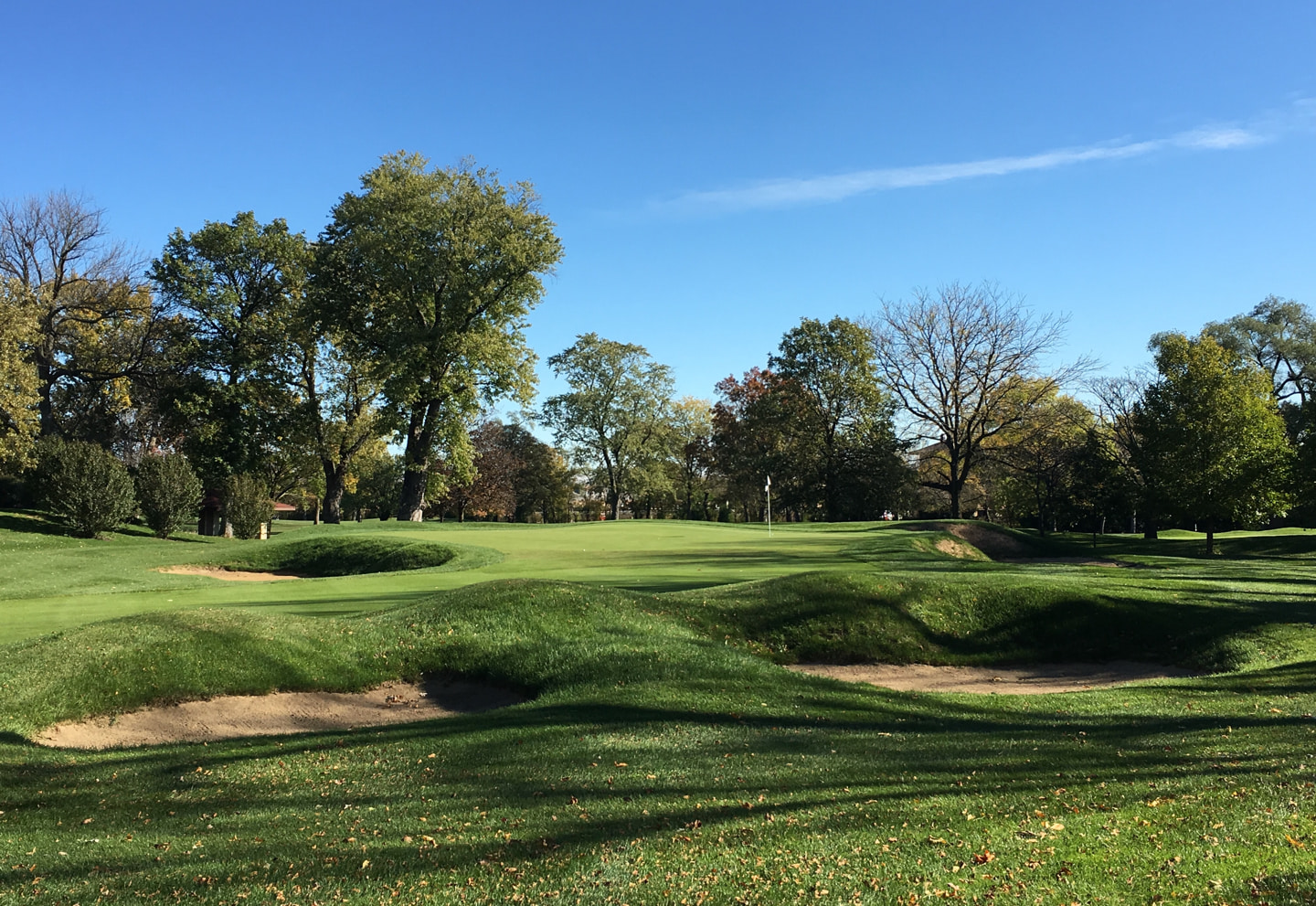
Finding the green at Ravisloe's 6th requires precision
-
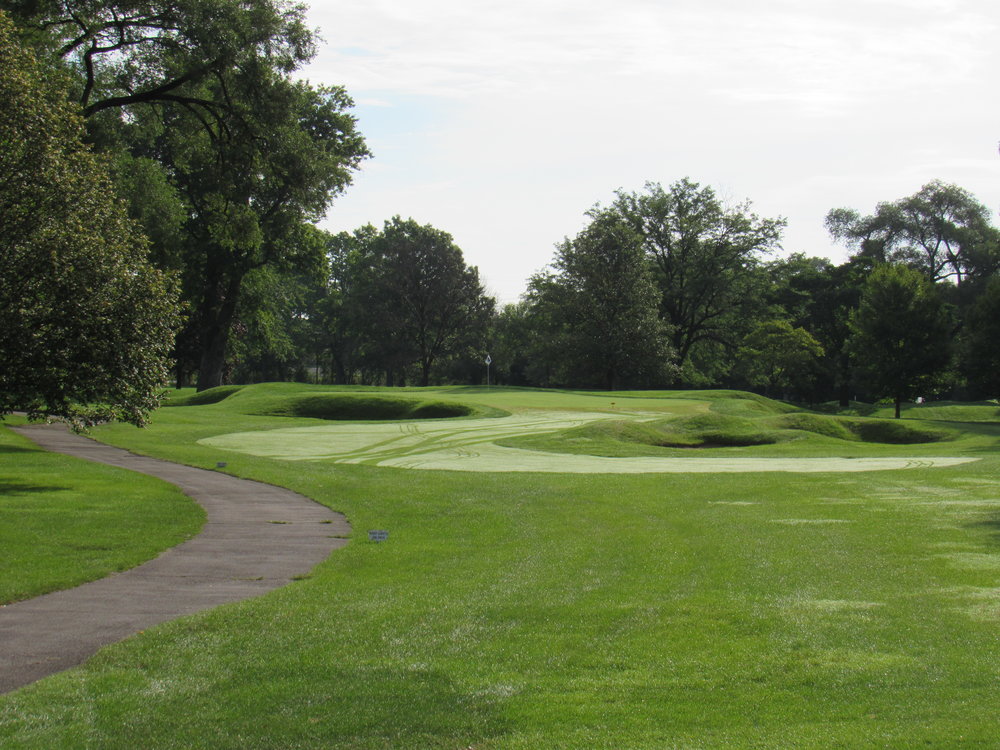
Check the wind before pulling a club on this tee
HOLE #7 – 203 yards – par 4
The second of back-to-back par-3s will test a player’s long-iron game as it requires a precise shot to a wide but shallow green complex. A particularly tough pin is on the back left portion. In order to get it close you have to fly the bunkers to the right, if bailing out to the right leaves an awkward chip over a ridge.
-
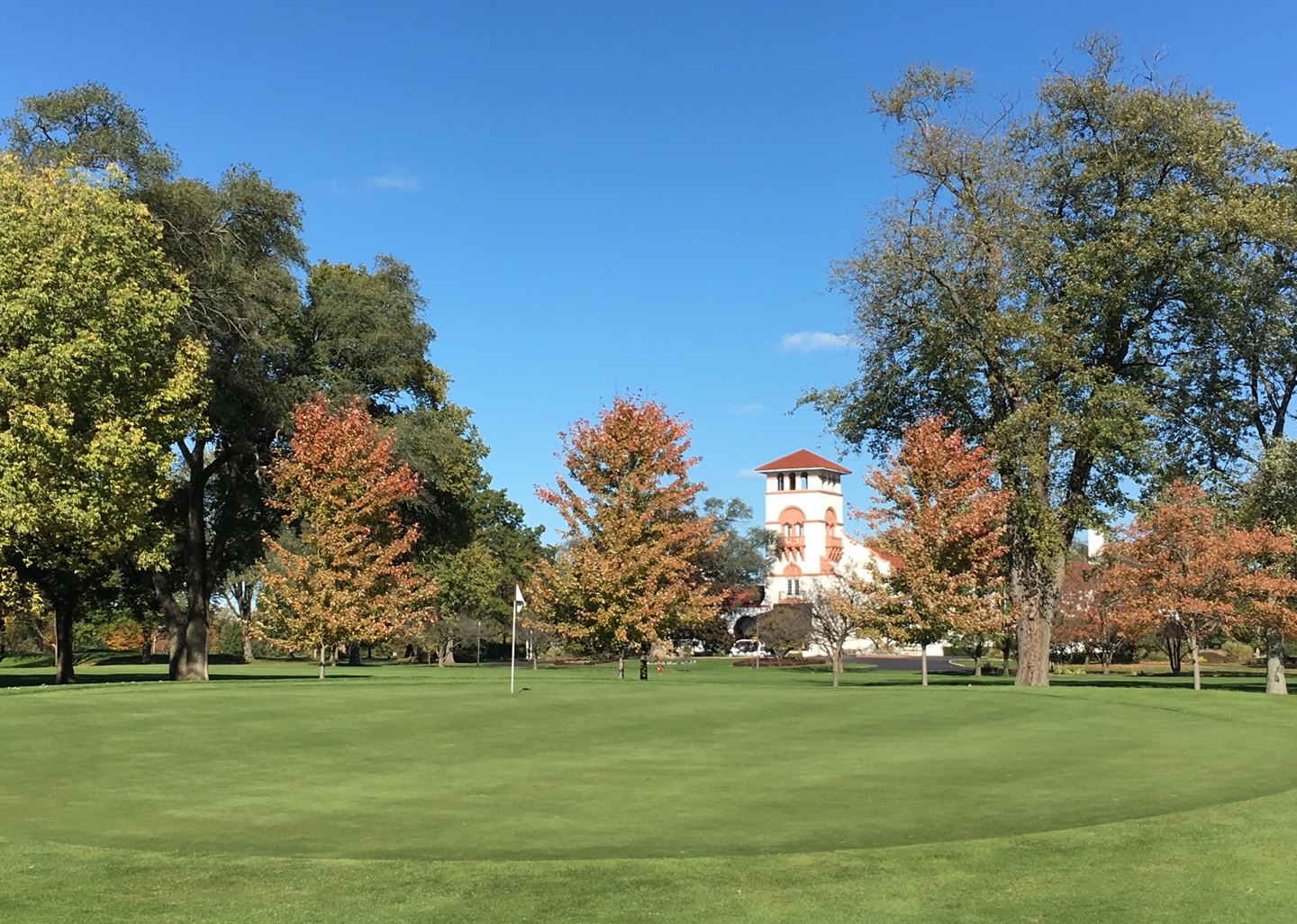
The 7th green with its tricky contours
-
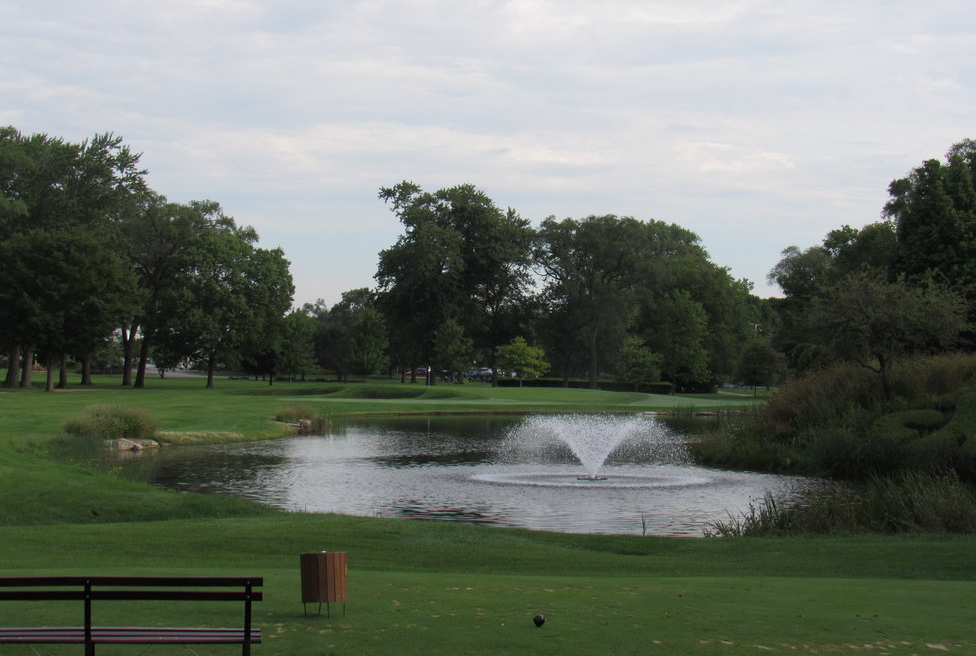
A solid tee ball is required on Ravisloe's 7th
HOLE #8 – 390 yards – par 4
One of the best holes at Ravisloe is the par-4 8th. An additional tee that brings the fairway bunker into play again would make the hole even stronger. As it stands currently, a good tee shot goes over the center of the large bunker and will leave a short-iron into the green. On the second shot, Ross does an excellent job deceiving with the bunkering that appears to be pushed up to the green, but is actually set a good 20 yards short.
-
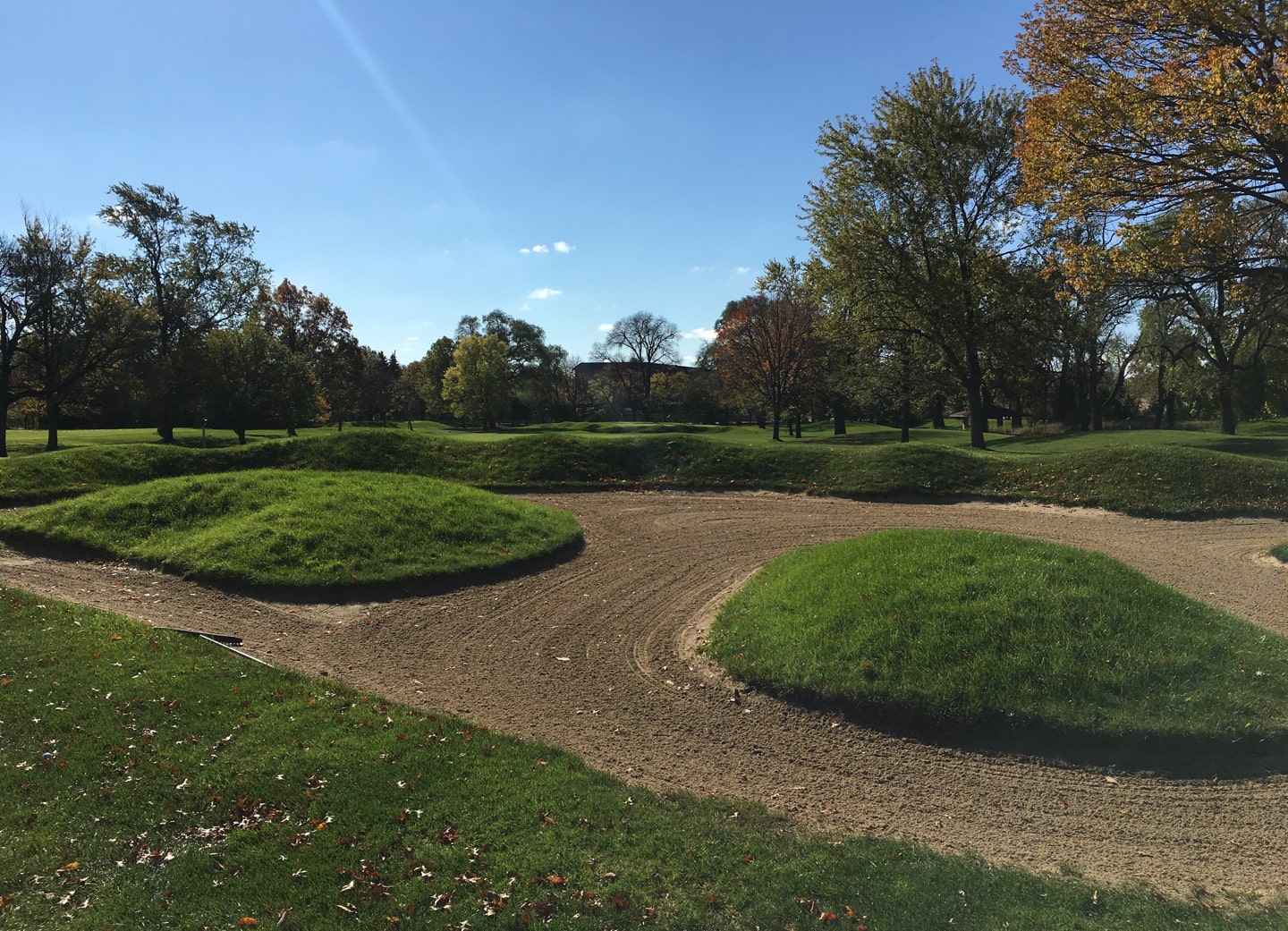
The bold fairway bunker on the 8th
-
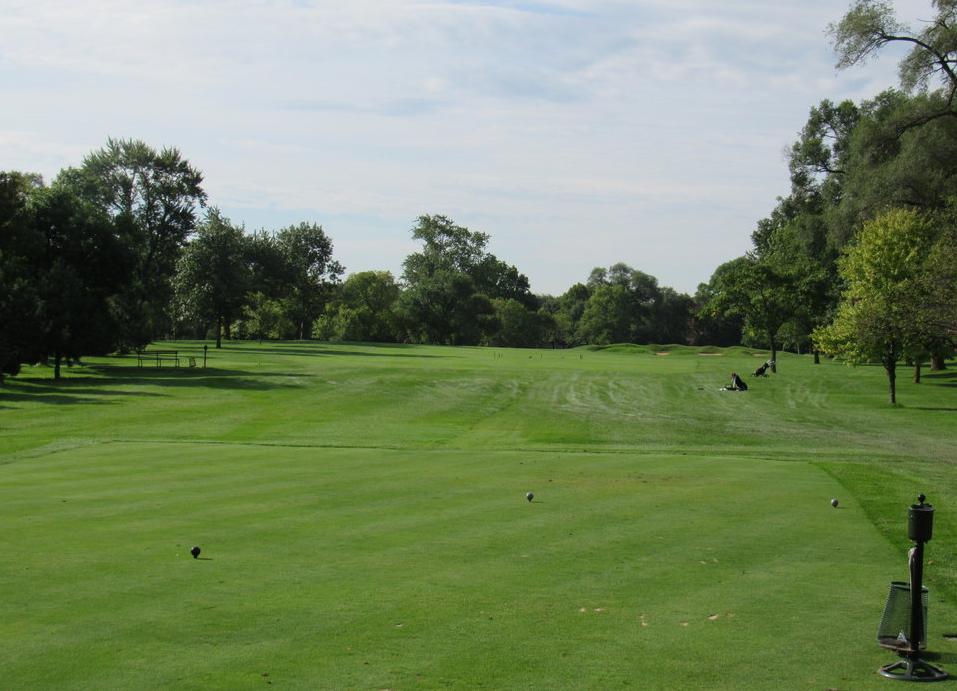
A good tee shot is a prerequisite for scoring
-
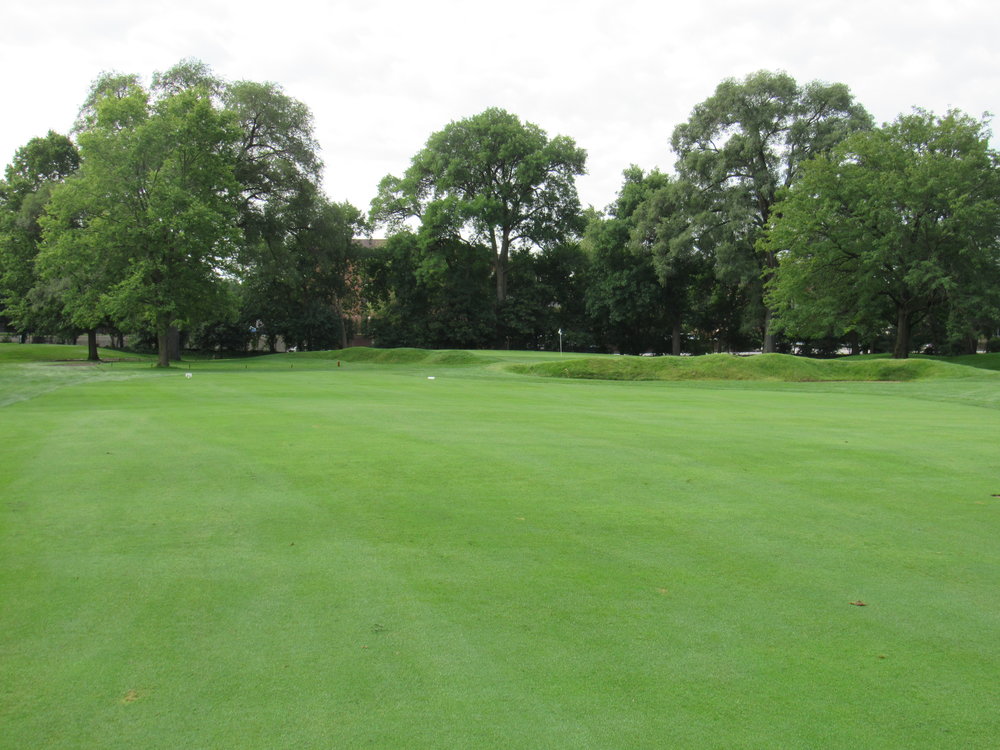
The approach into the deceptive 8th green at Ravisloe
HOLE #9 – 405 yards – par 4
The closing hole on the front nine is not an easy par, requiring two strong shots. A good drive will leave a short-iron or wedge approach to a very challenging green complex. Hitting the right section of the green on approach is crucial to avoid adventurous putting.
-
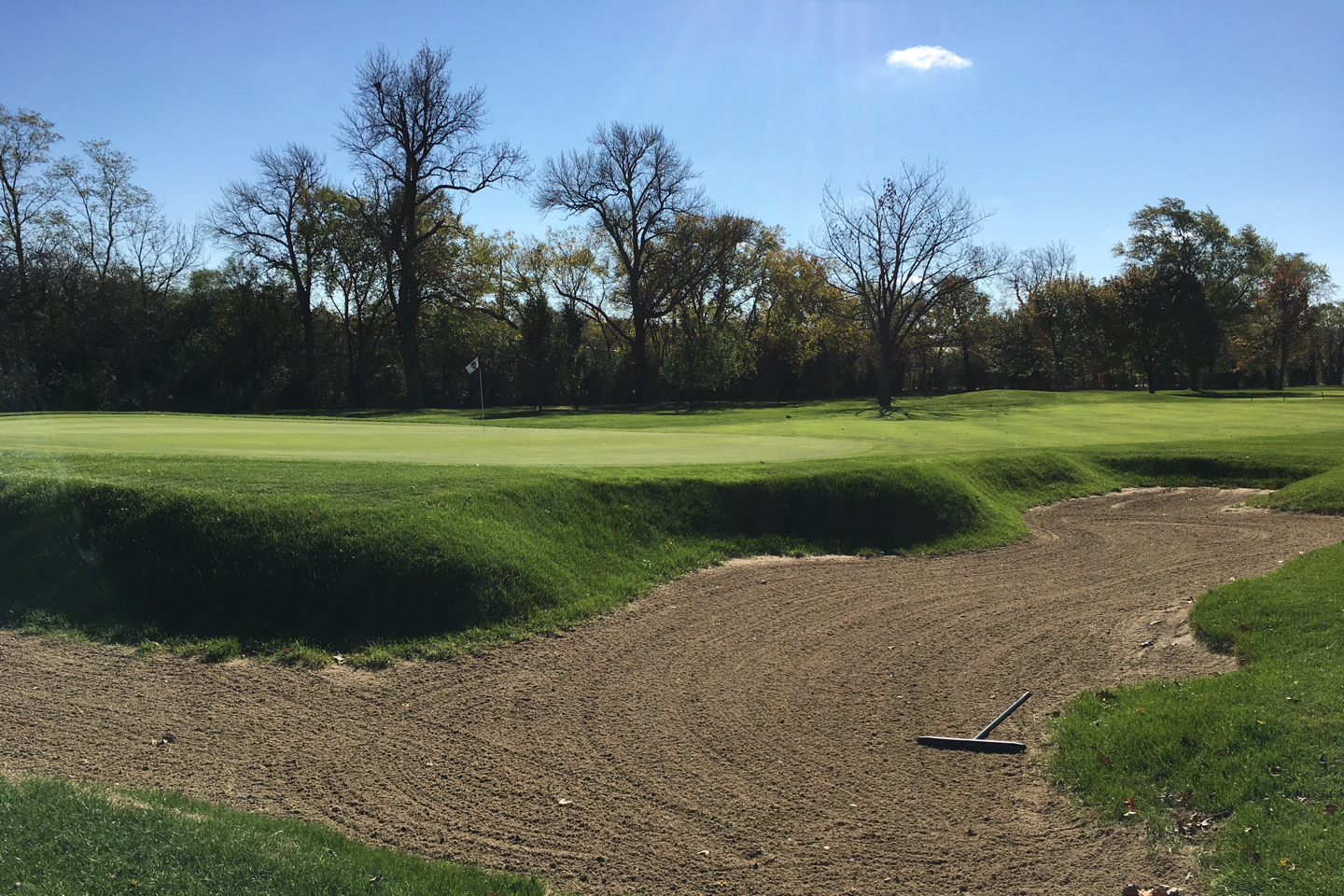
A large, flat bottomed bunker guards the 9th green
-
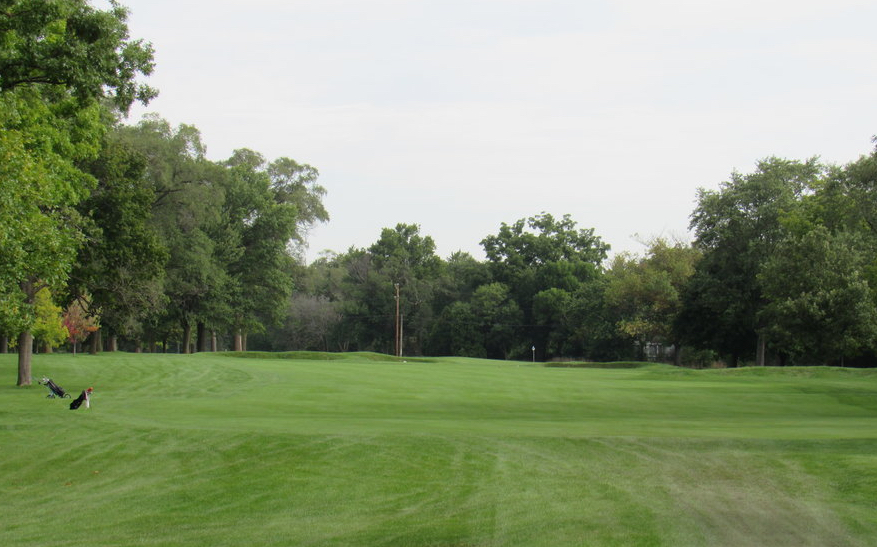
Another strong tee shot is demanded on Ravisloe's 9th
-
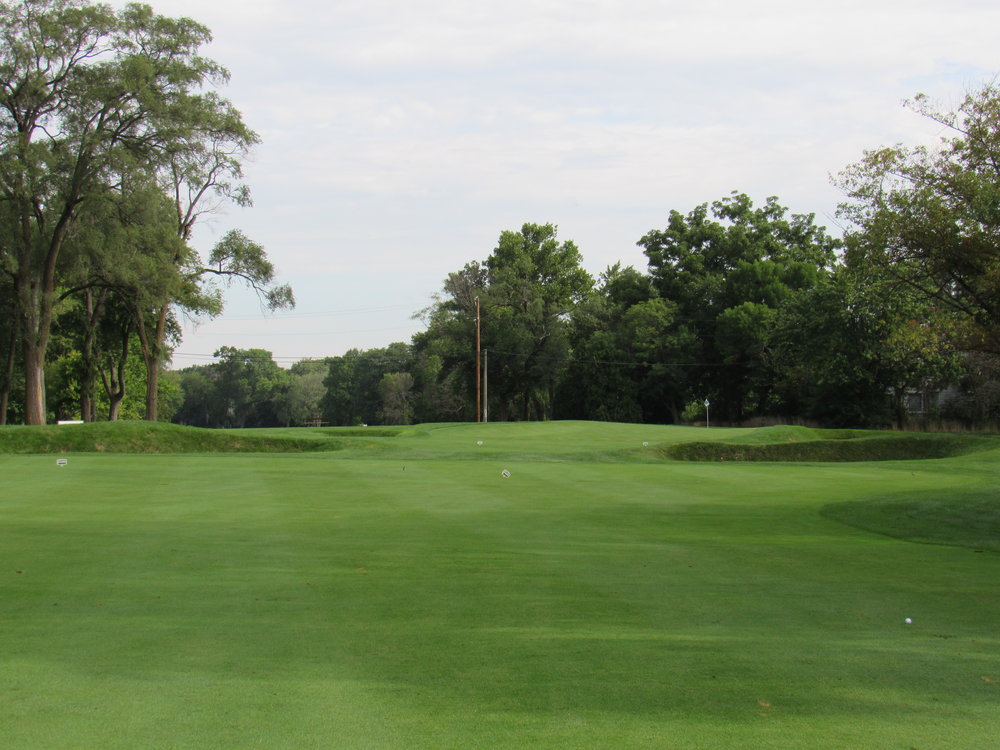
Approaching the tough green
HOLE #10 – 395 yards – par 4
The back nine starts with another mid-length par-4 that plays slightly downhill. A good tee shot will move right to left and leave a wedge into one of the more benign but subtle greens at Ravisloe, giving a great opportunity to make a birdie.
-
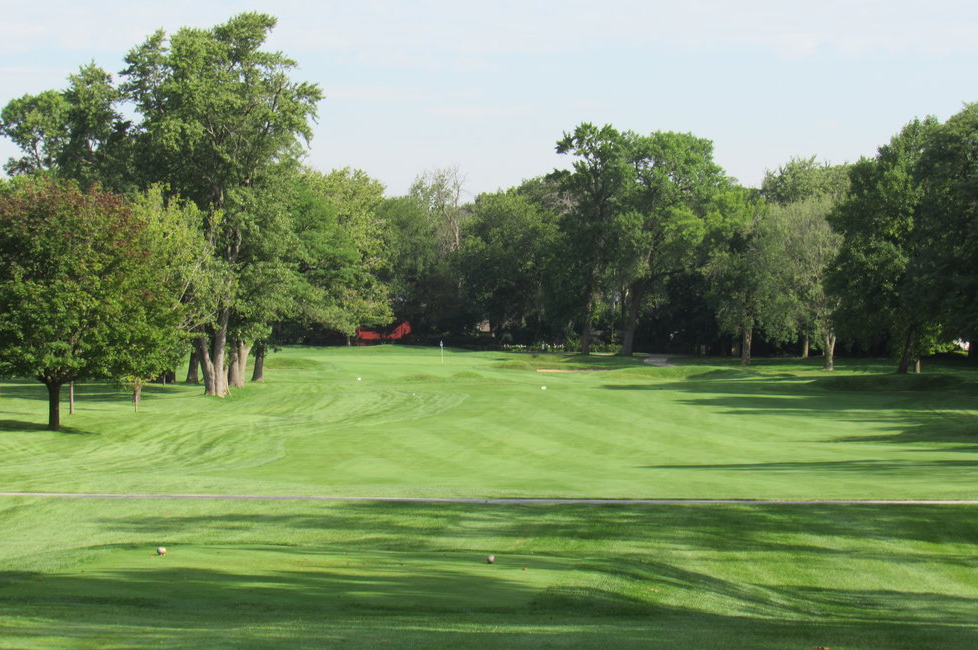
The tee shot over the road on the 10th
-
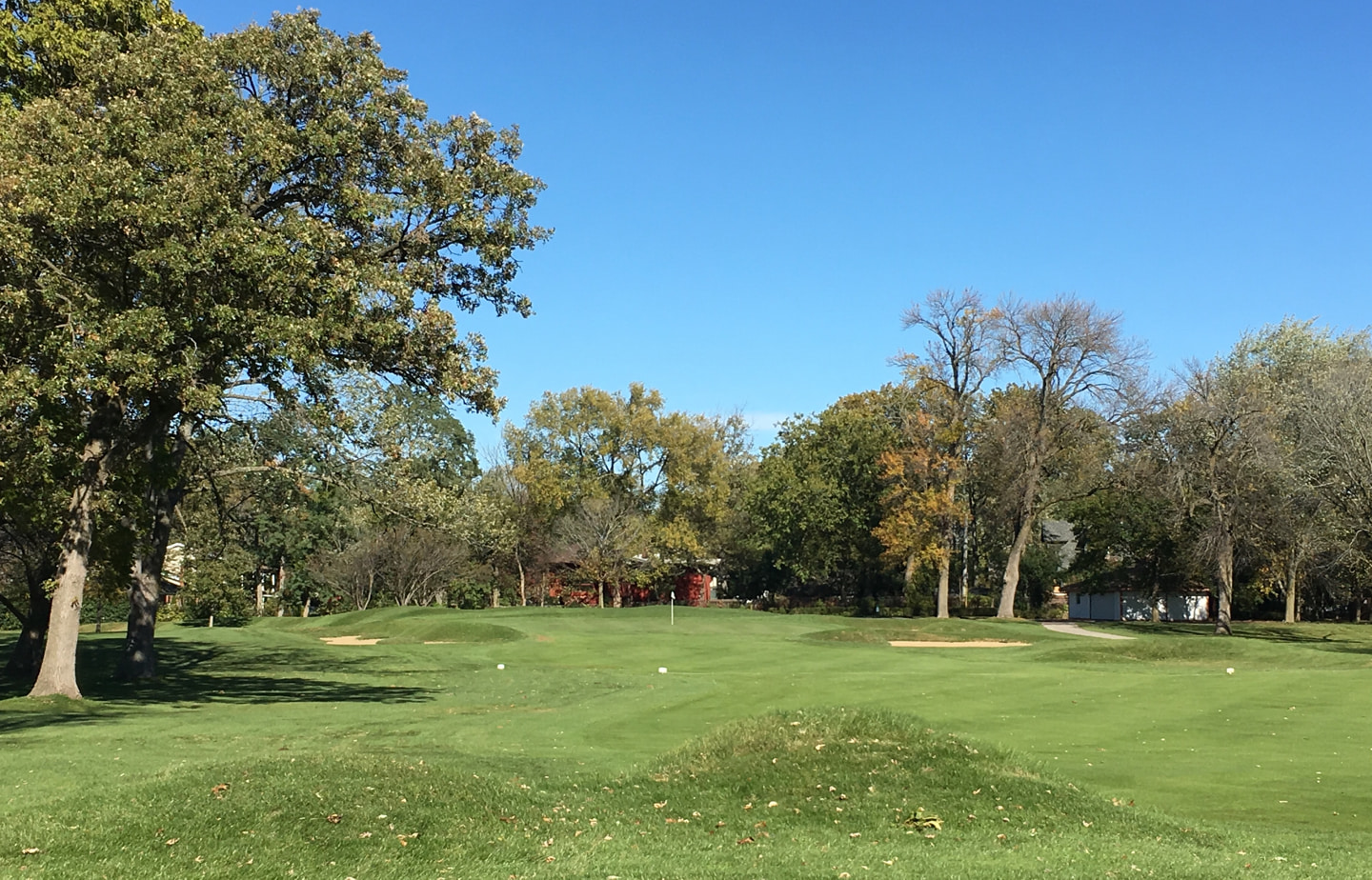
Ross mounds guard the left
-
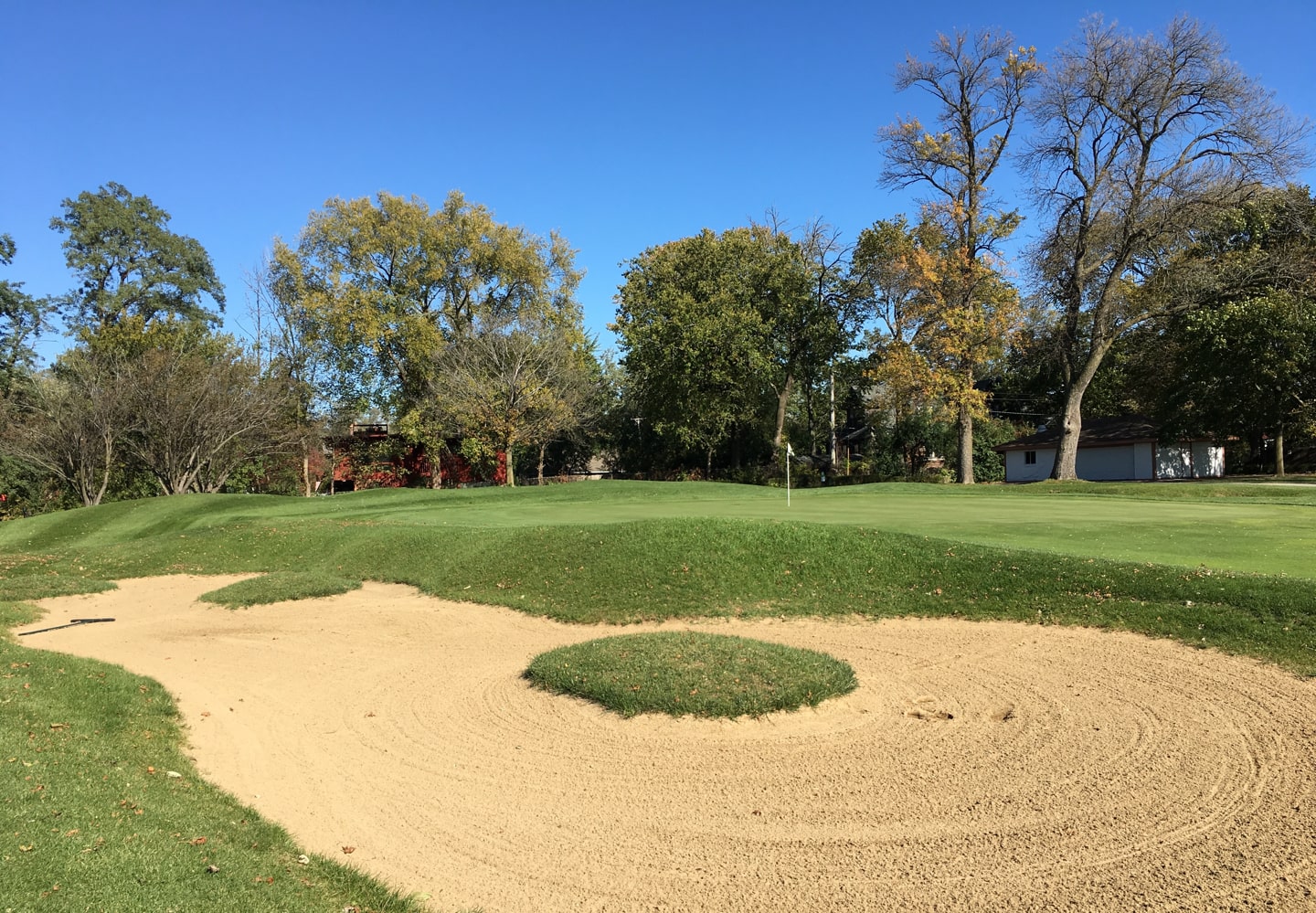
An island in the sea of sand left of the green
HOLE #11 – 226 yards – par 3
The 11th starts a terrific stretch (11-16) of golf at Ravisloe and this is one of the toughest par-3s in the area. Nothing good can happen by missing left in the bunker or the rough. A great shot is to the front right corner of the green which leaves a right to left breaking putt on the narrow putting surface.
-
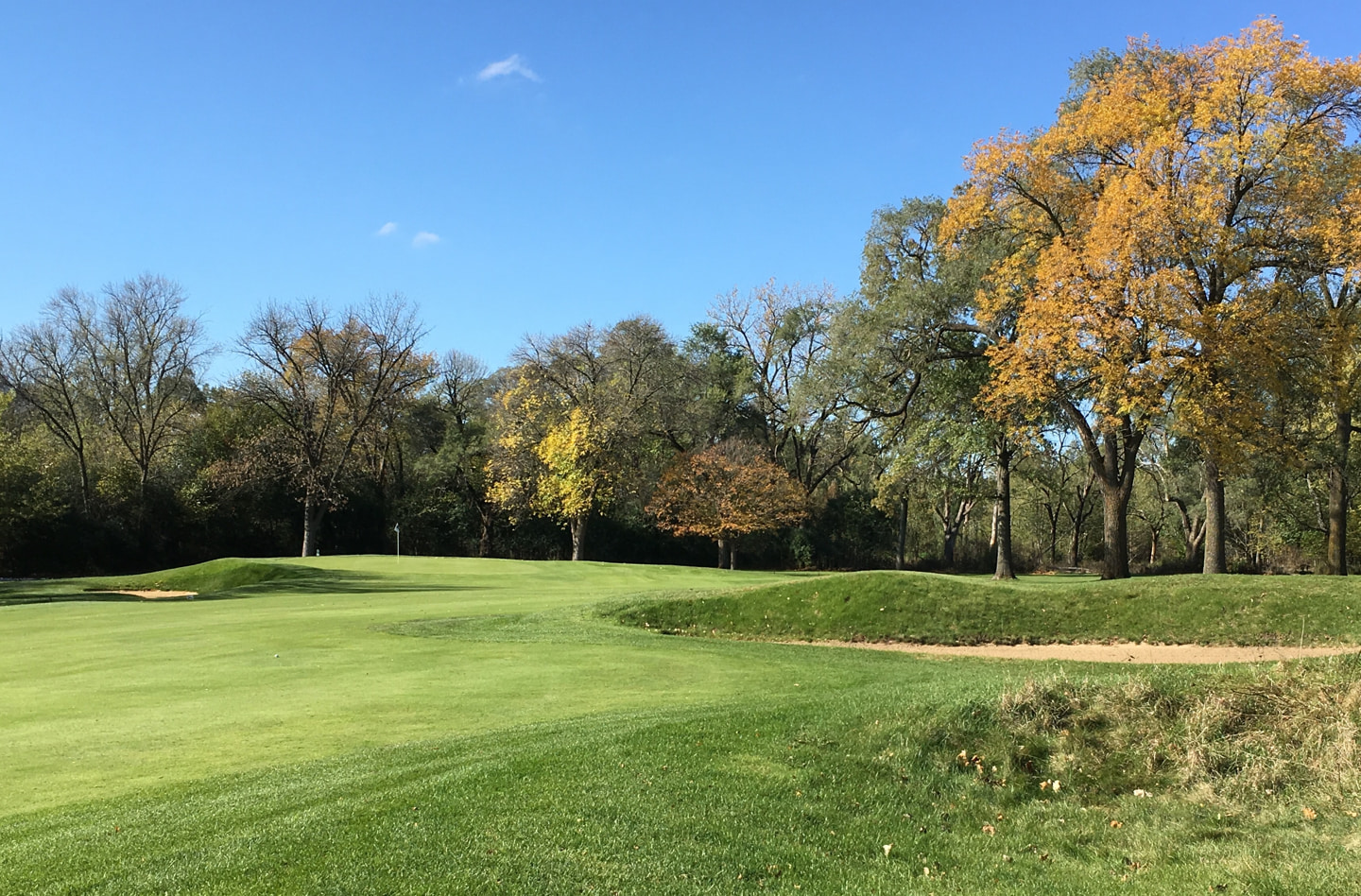
From the right looking into the green entrance
-
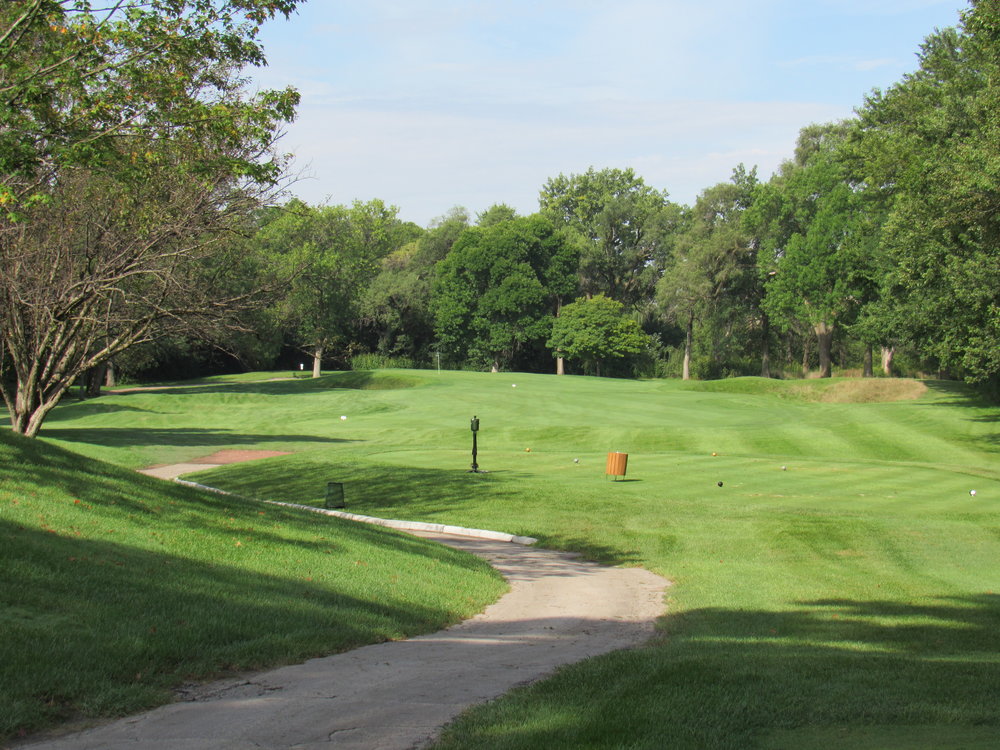
The tee shot on one of Chicago's best one-shotters
-
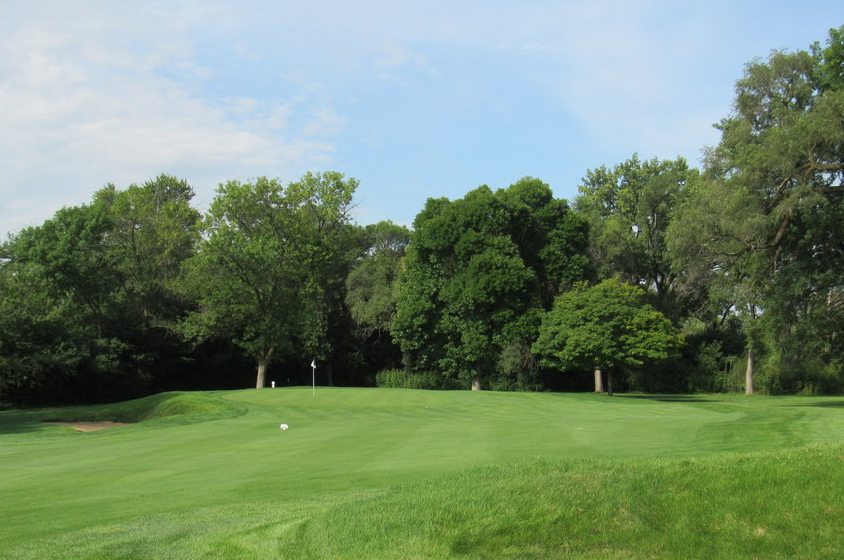
Nowhere good to miss left on Ravisloe's 11th
HOLE #12 – 400 yards – par 4
A terrific par-4 that is defined by the bunker that sits in the middle of the fairway. It’s 250 yards to carry, making medium length hitters choose right or left and long hitters make sure they hit it solid. The approach is also a challenge to the small and sloped green and putts from the right side to the left are very slick.
-
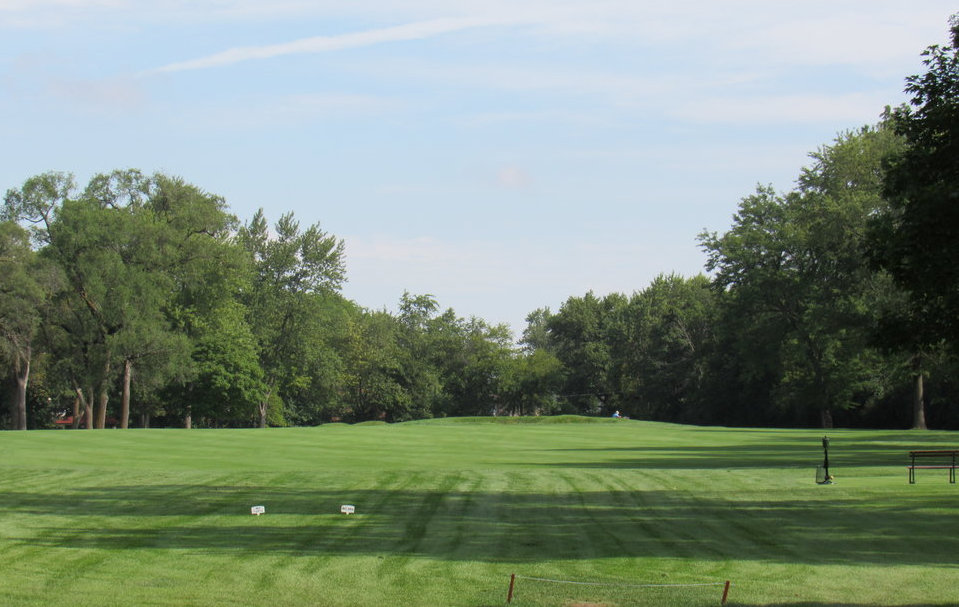
The centerline bunker presents a choice on the 12th tee
-
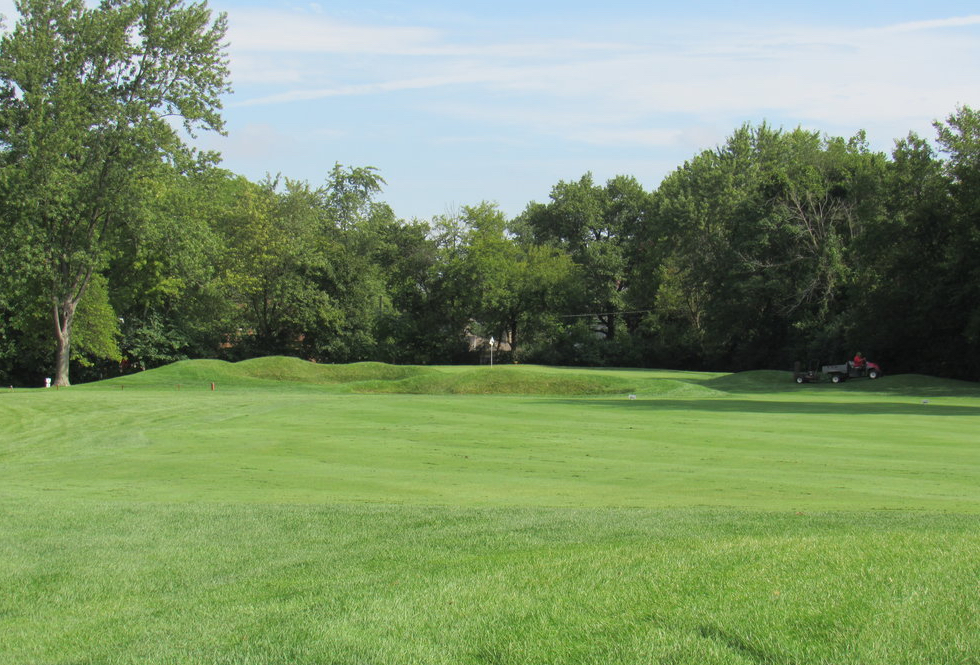
Approaching the well defended green
-
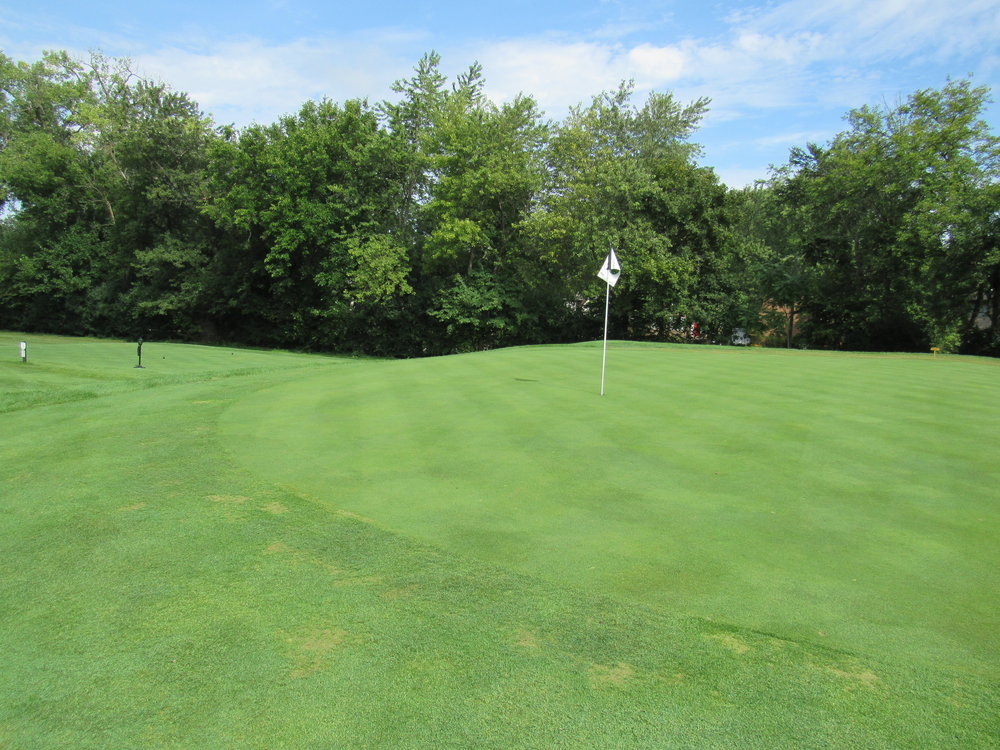
A steep slope drops off the left side of the green
HOLE #13 – 550 yards – par 5
The only par-5 on the backside invites players cut it loose. The ideal shot is a power fade that covers the fairway bunker. From there, a long-hitter is able to challenge the small and heavily protected green in two. One of the strongest aspects of this par-5 is the layup shot. Ross uses cross bunkering to make players think – no lazy layups will suffice.
-
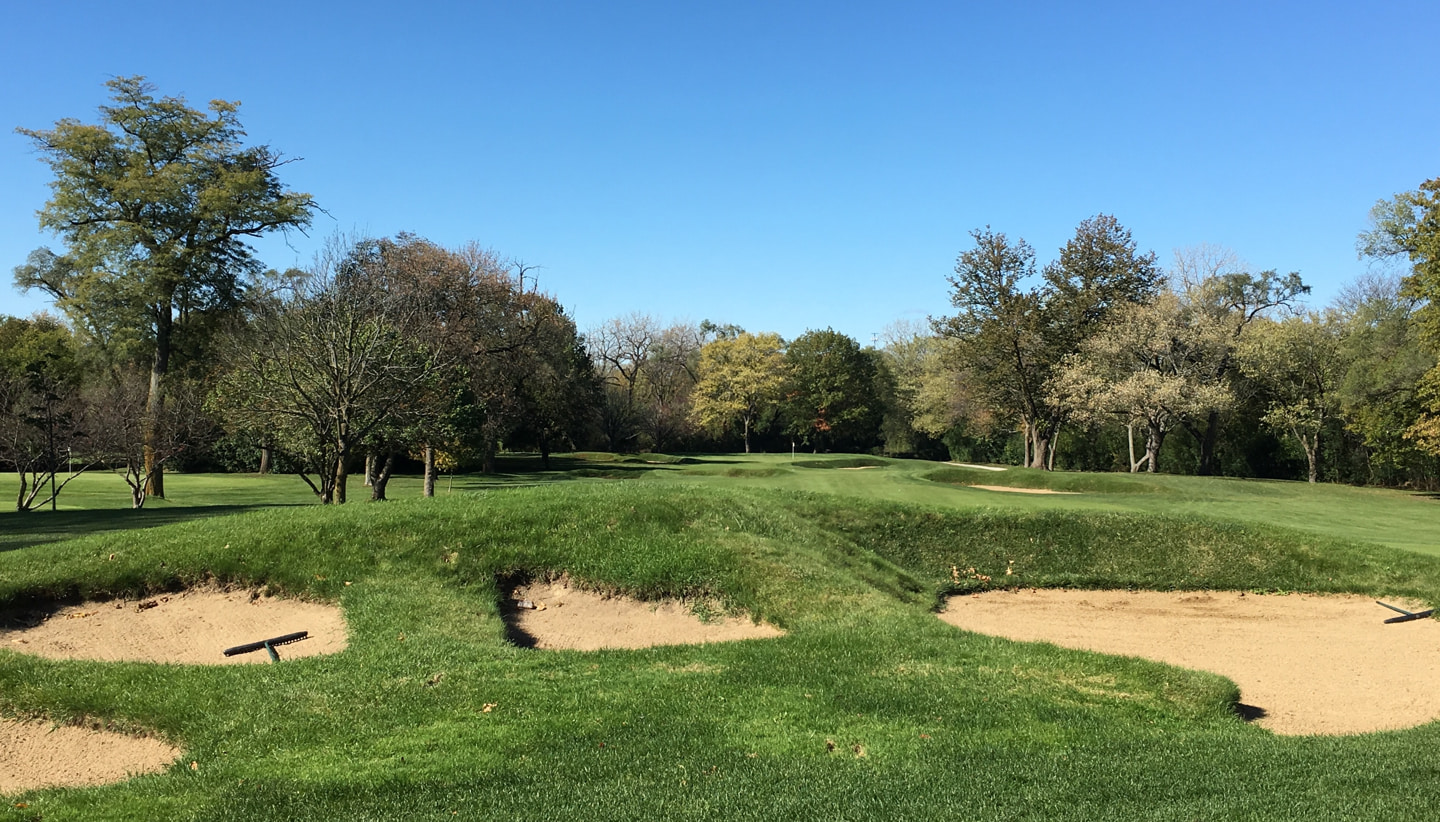
Distinctive bunkering on Ravisloe's 13th
-
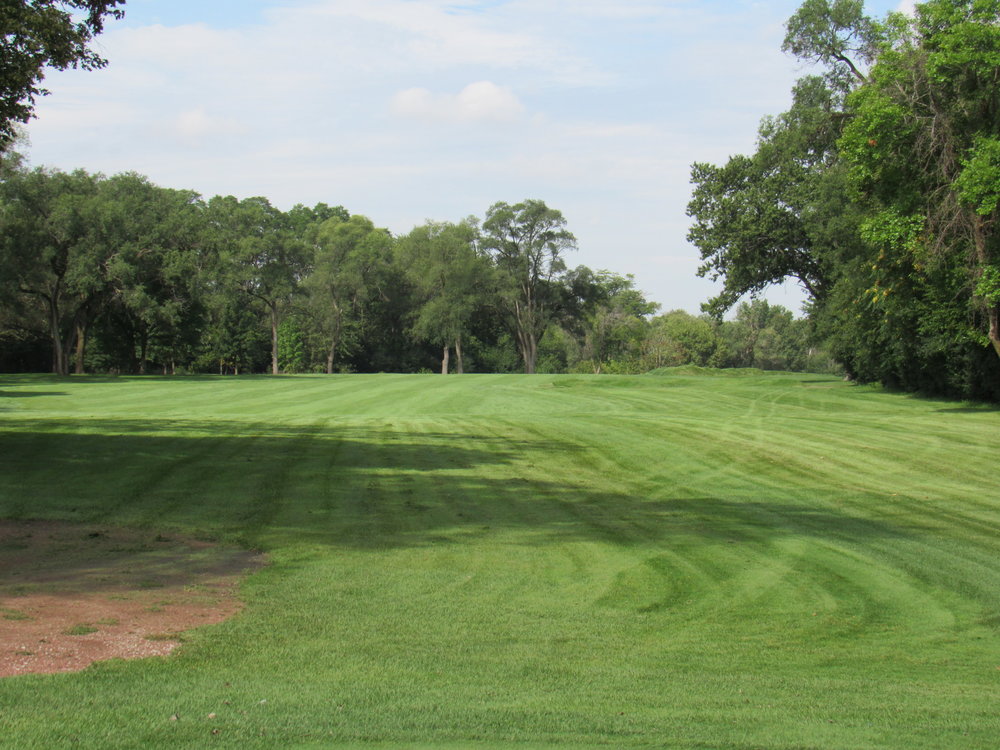
The tee shot favors a left-to-right flight
-
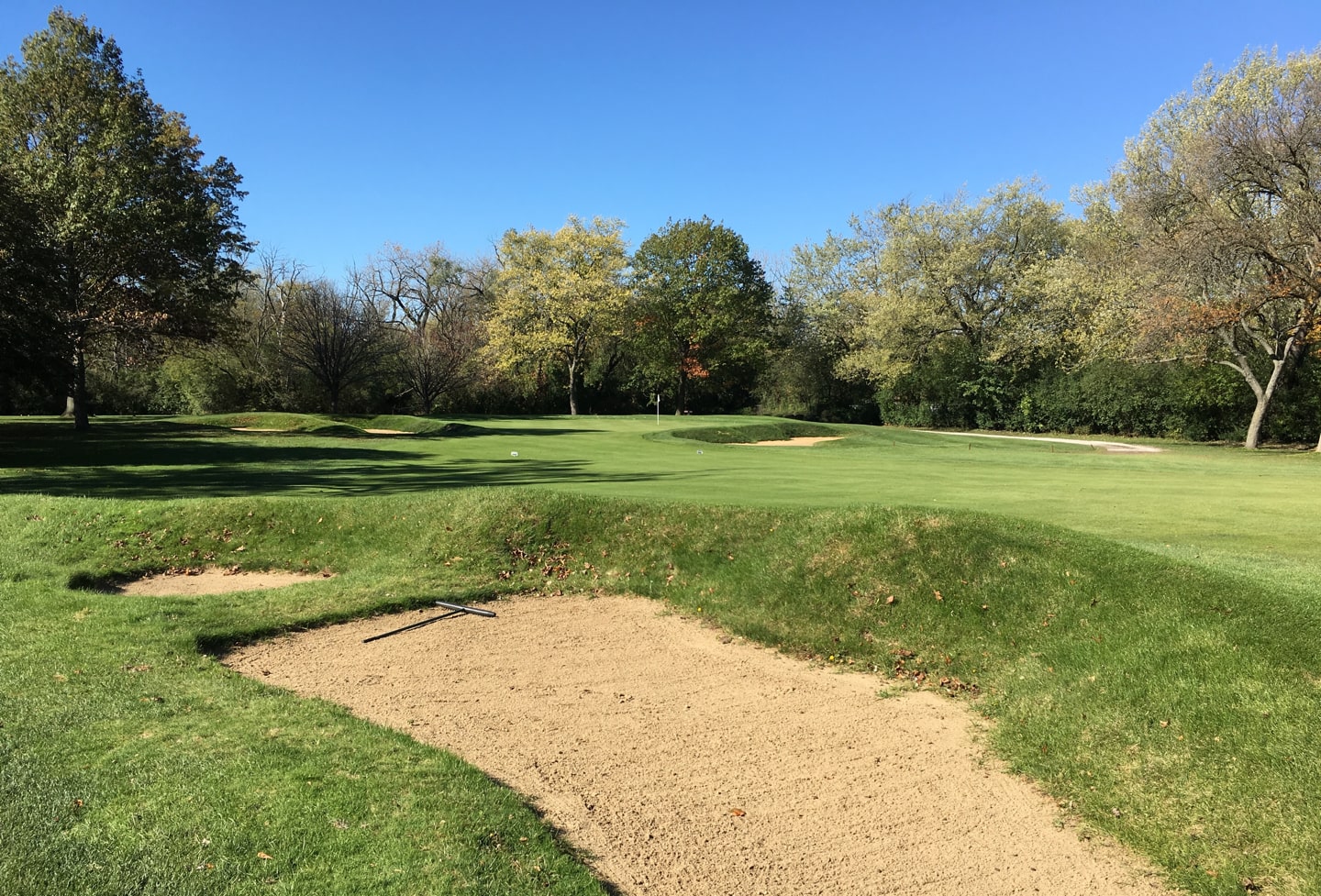
More bunkering in the layup zone
-
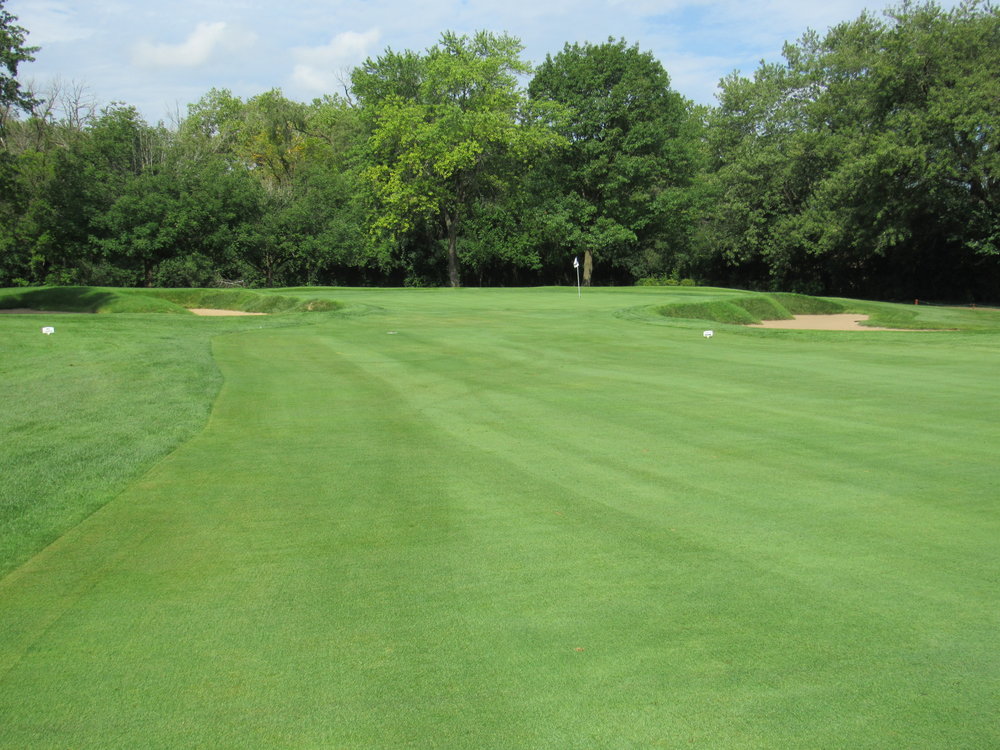
Approaching the beautifully set green at the 13th
-
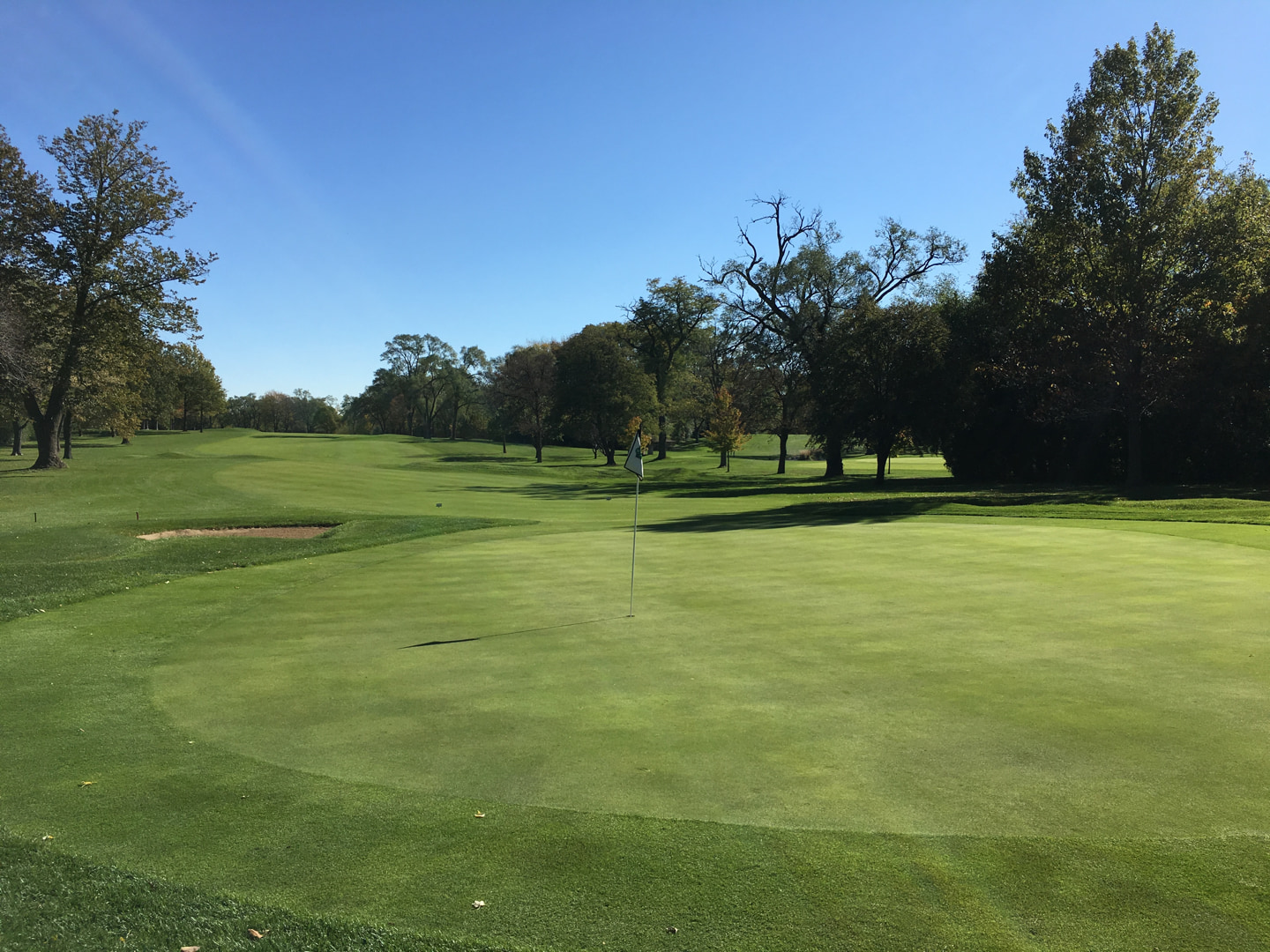
The 13th at Ravisloe rolls over gorgeous land
HOLE #14 – 410 yards – par 4
Another tough par-4, the key to the 14th is hitting a good tee shot avoiding the hazard on the left and the bunkers on the right. Mr. Ross was not afraid to apply pressure on every tee. Successful players are left with a short-iron approach to a heavily sloped green.
-
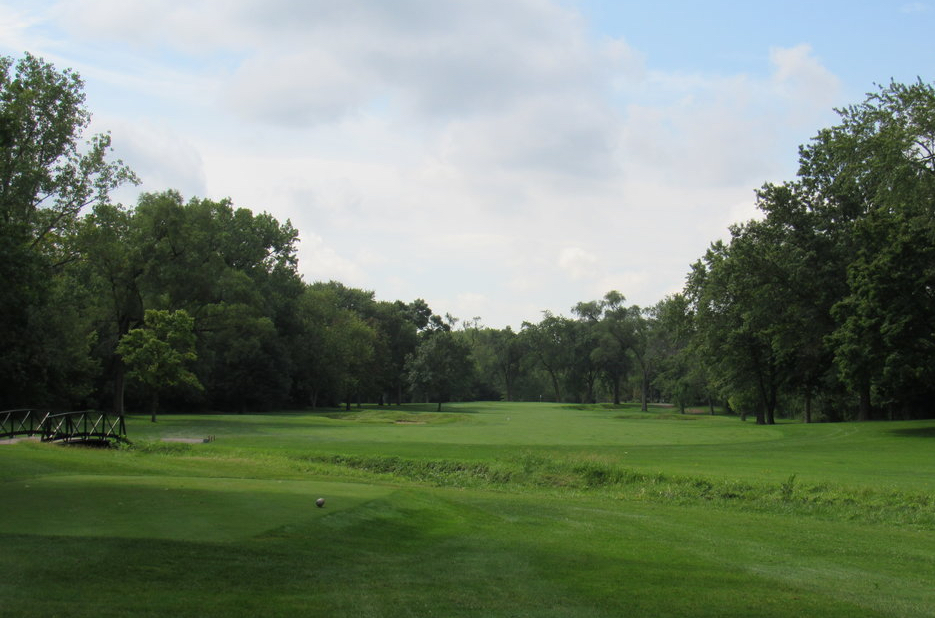
The tee shot at Ravisloe's 14th
-
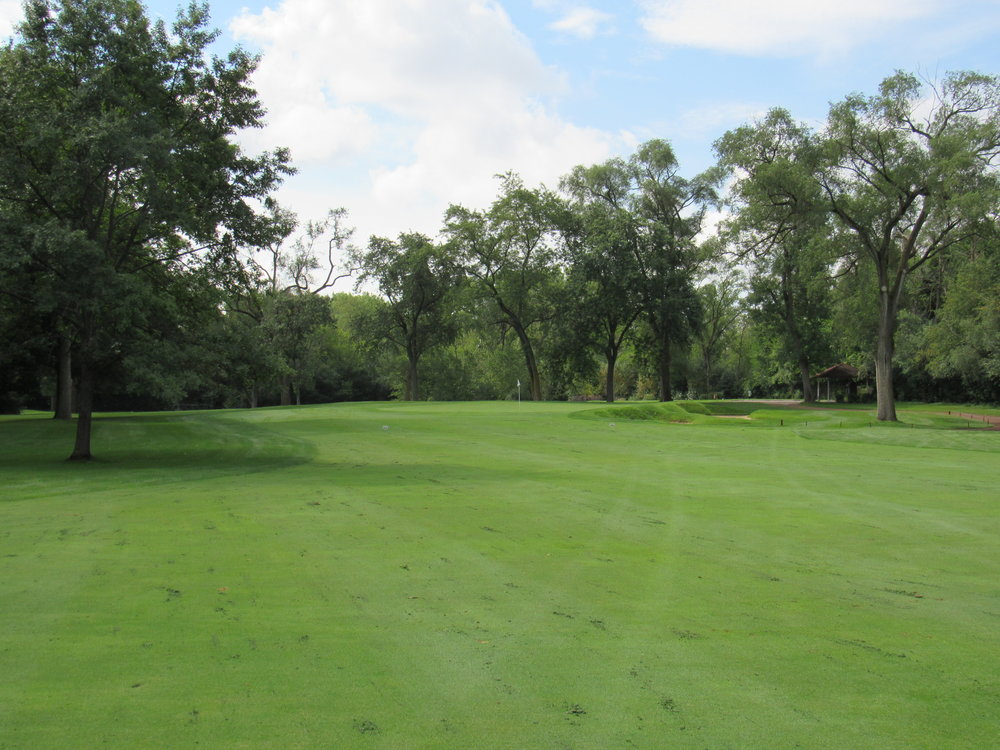
Angles matter when approaching the sloping green
HOLE #15 – 146 yards – par 3
A beautiful short par-3 that has treacherous bunkers surrounding it. The 15th tee is set below in a valley making gauging the wind difficult, and the heavily sloped back to front green places an emphasis on distance and spin control in order to hit a shot close.
-
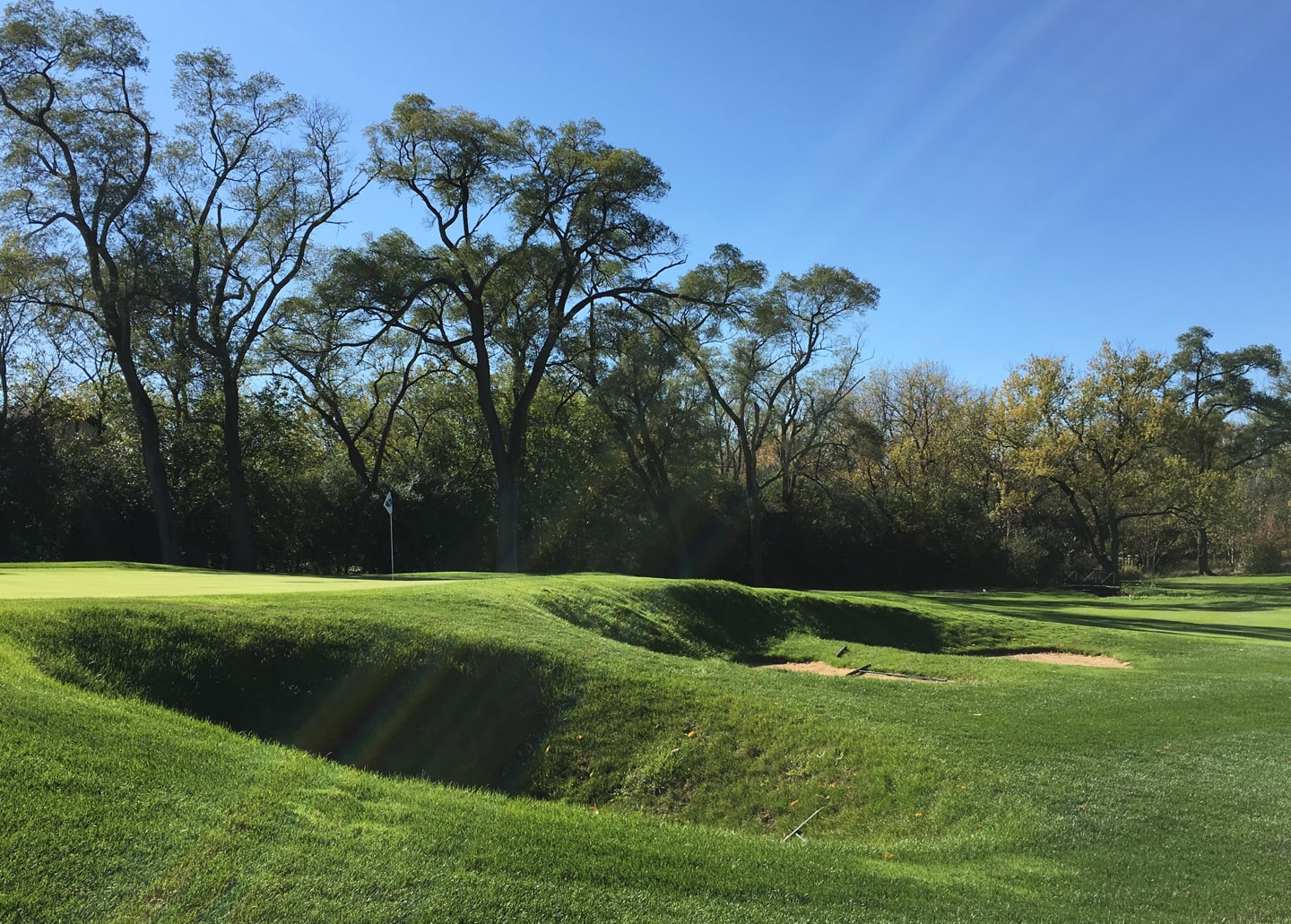
Deep bunkers guard the left
-
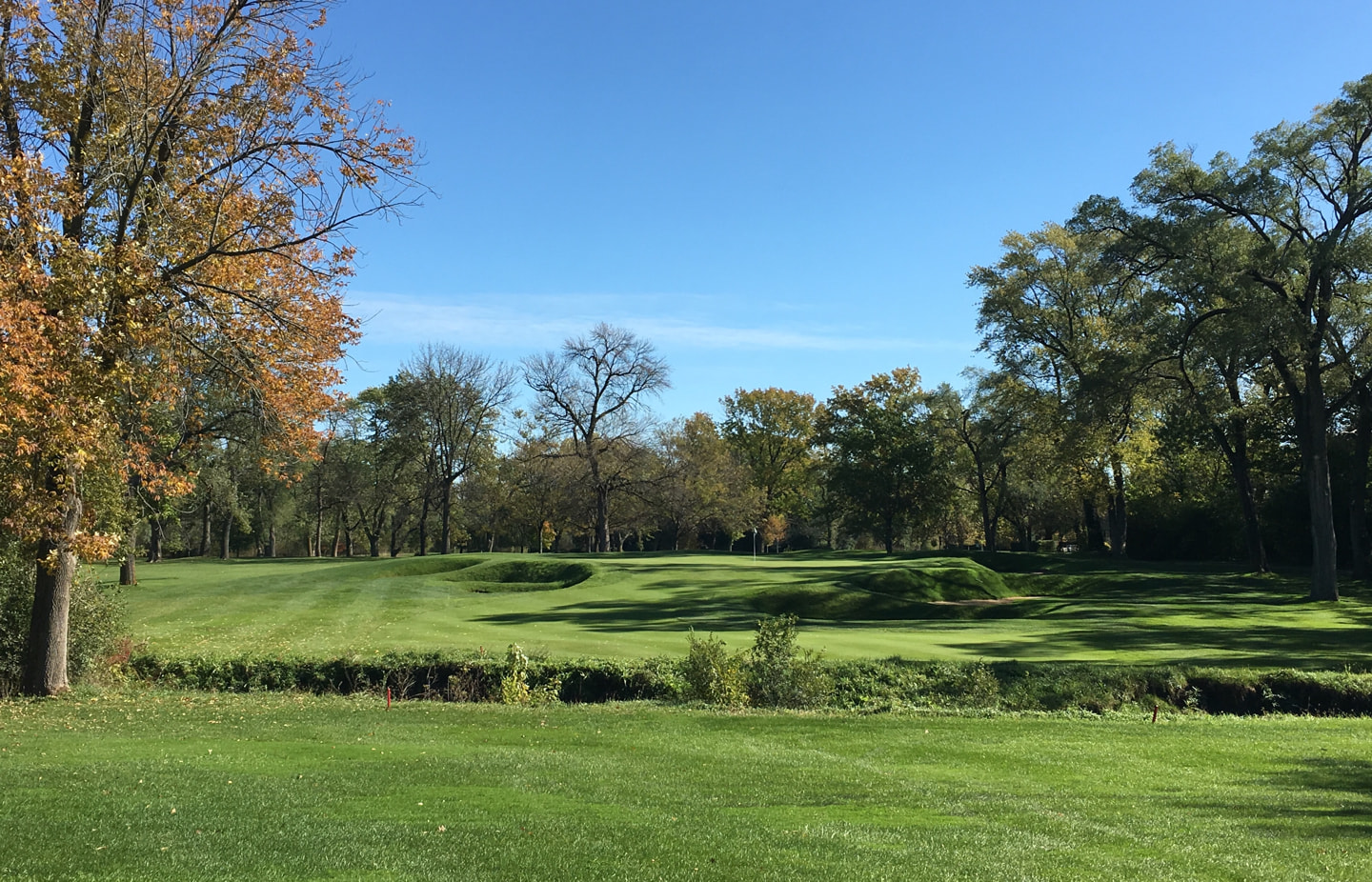
The fifth of Ravisloe's stellar set of one-shotters
-
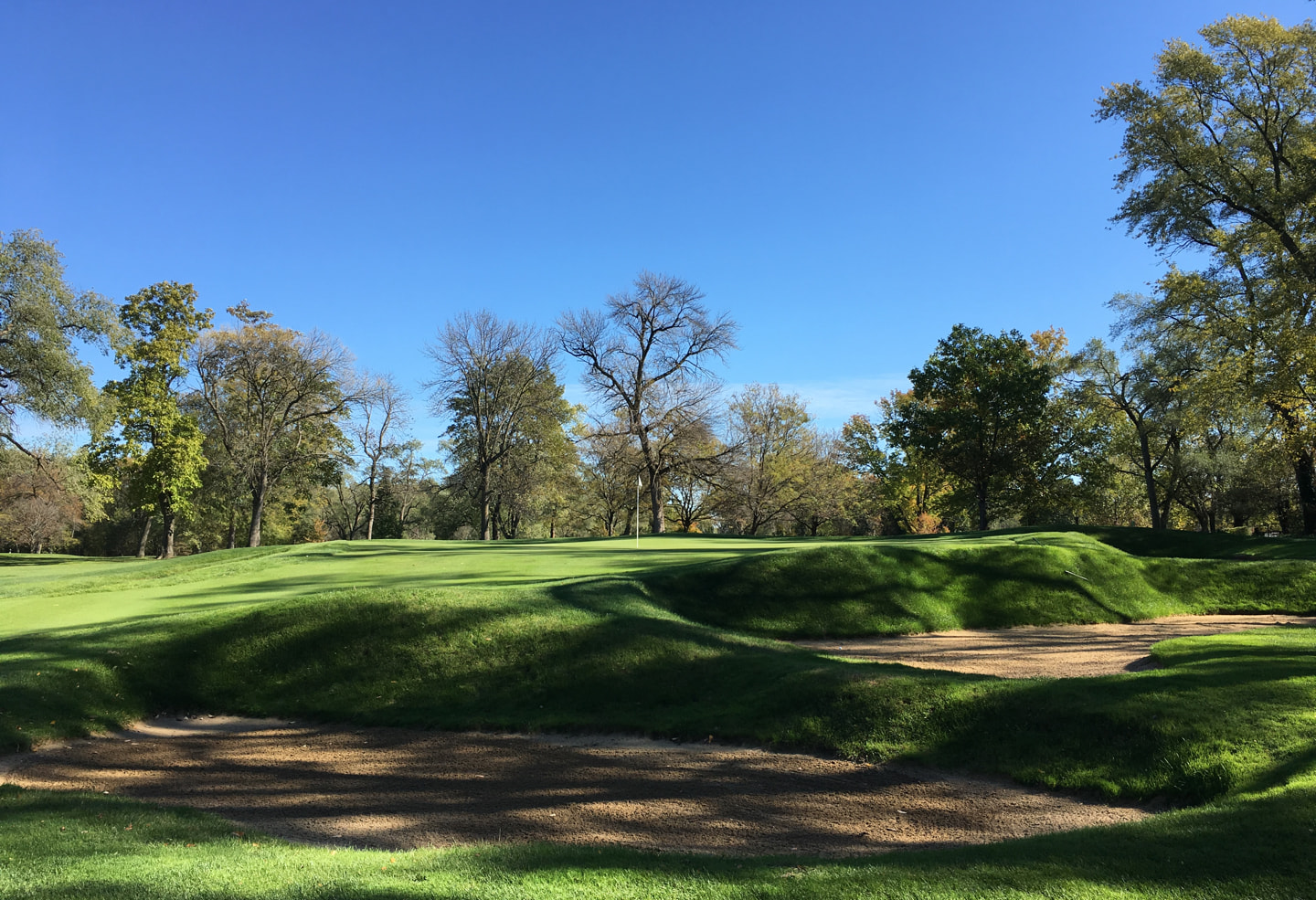
Misses on either side are punished
HOLE #16 – 390 yards – par 4
This spectacular par-4 favors a left-to-right tee shot to the downhill fairway. The approach is where the challenge begins with the tiny green sloping heavily from front-to-back making it extremely difficult to hit the ball close. Come up a little short and you are left with a long downhill putt, a little long you will find yourself in the back chipping area.
-
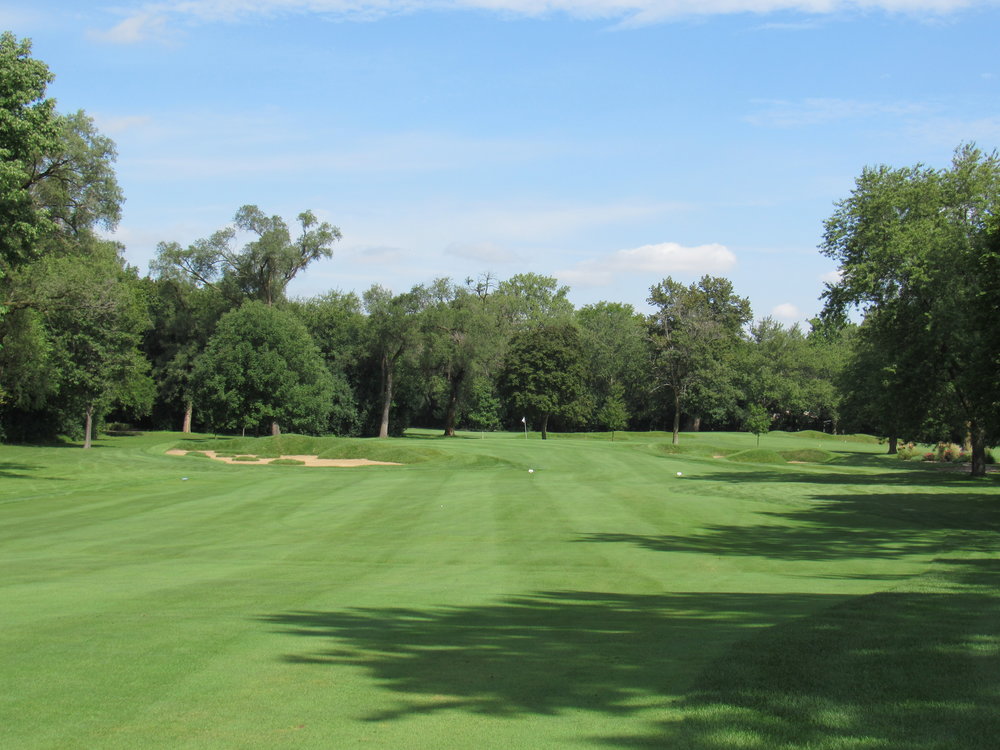
Bunkers guard both sides of the approach on the 16th
-
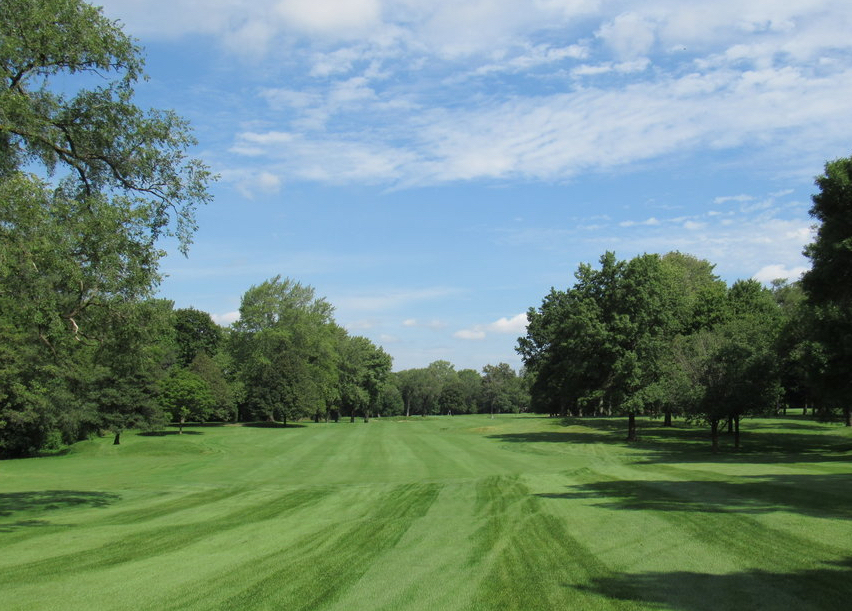
The 16th at Ravisloe from the tee
-
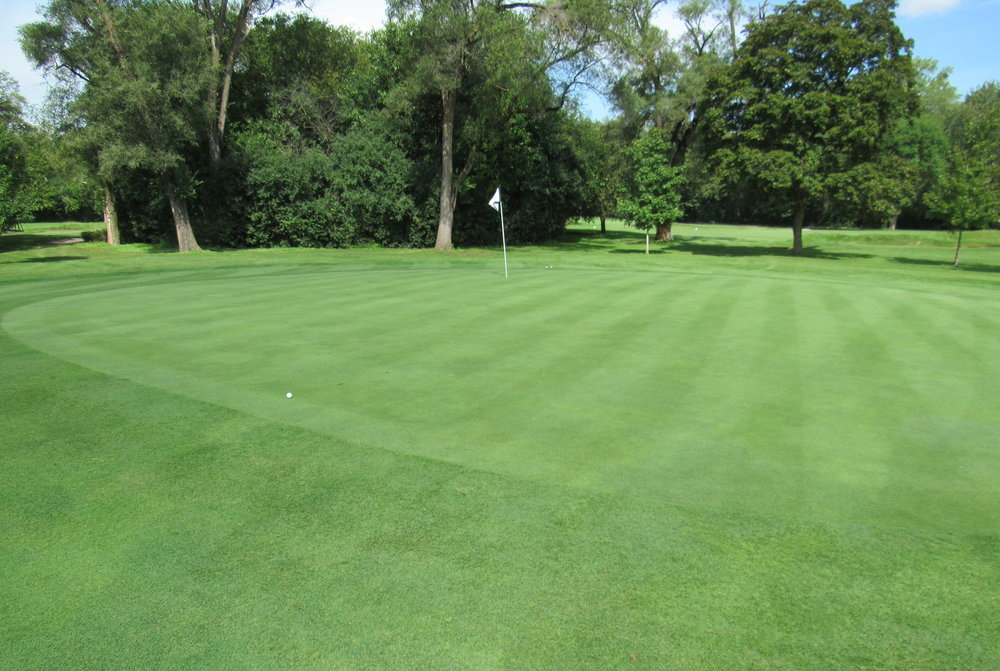
Another sloping Ross green
-
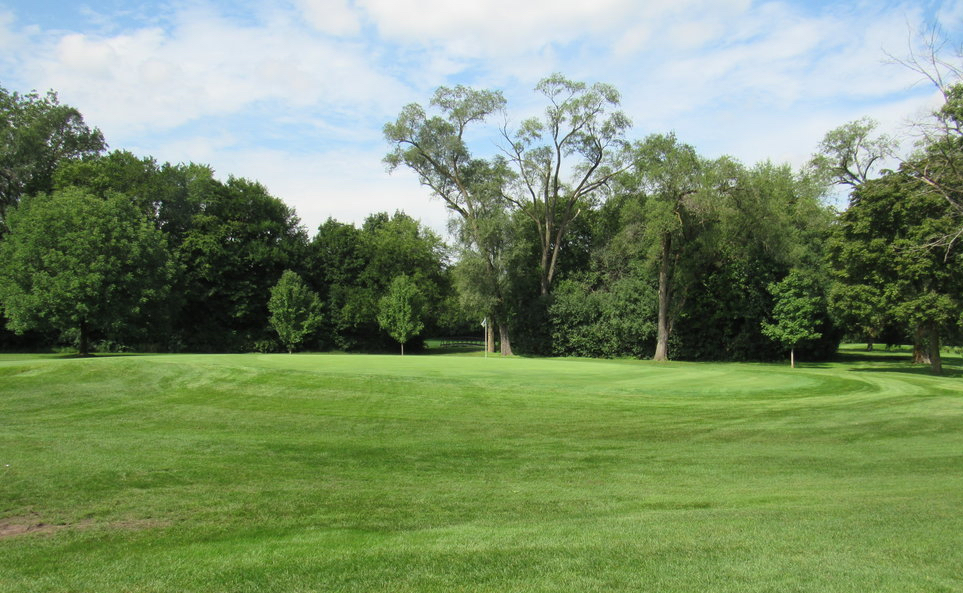
From the side the severity of the slop is evident
HOLE #17 – 400 yards – par 4
The 17th turns and heads back to the clubhouse with a blind tee shot. An ideal line is directly over the small pot bunker that is visible from the tee. From there, players are left with a short-iron approach to a subtle breaking green with a deep bunker guarding the right side and long rough protecting the left.
-
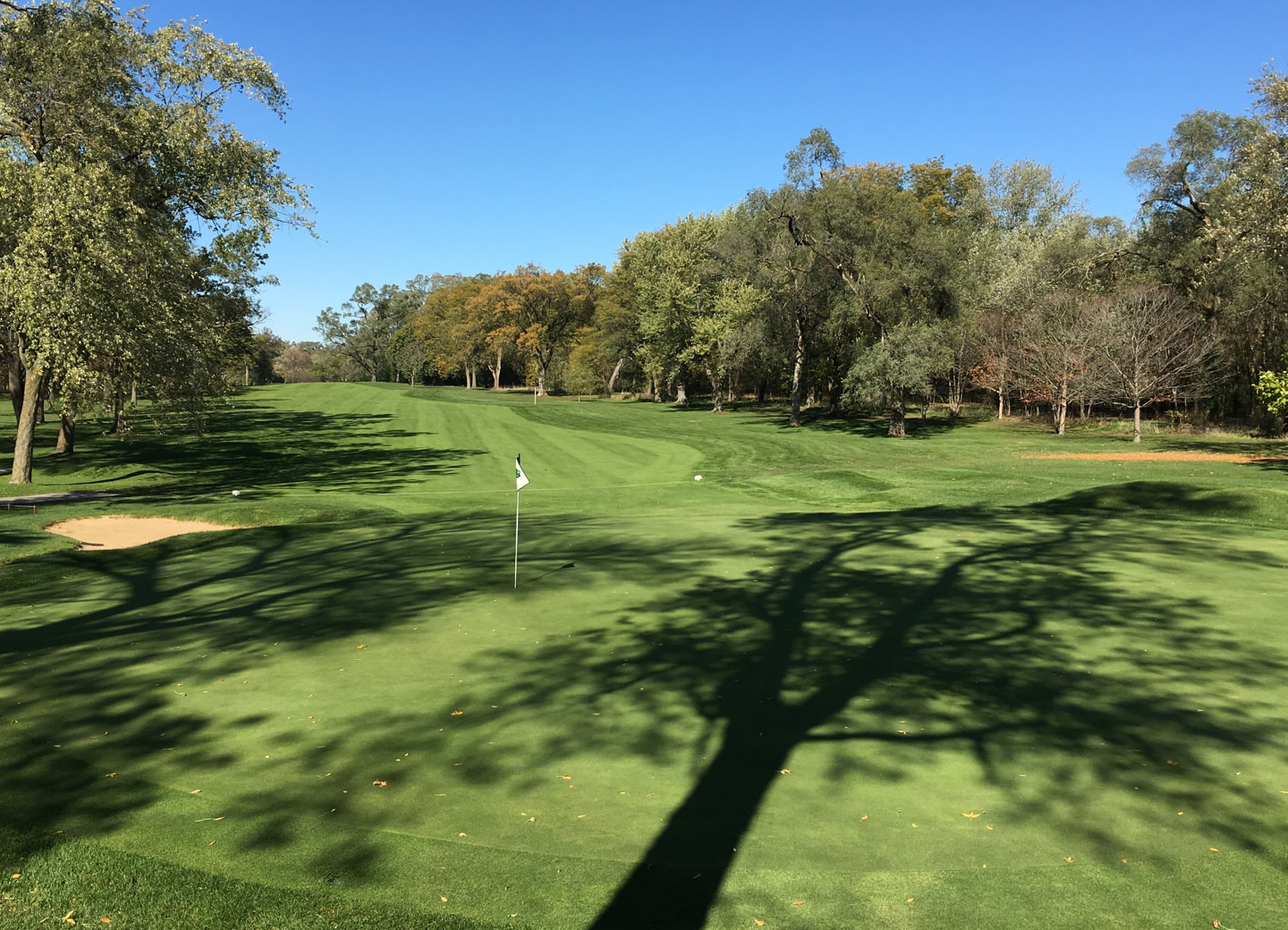
Tumbling down to the 17th at Ravisloe
-
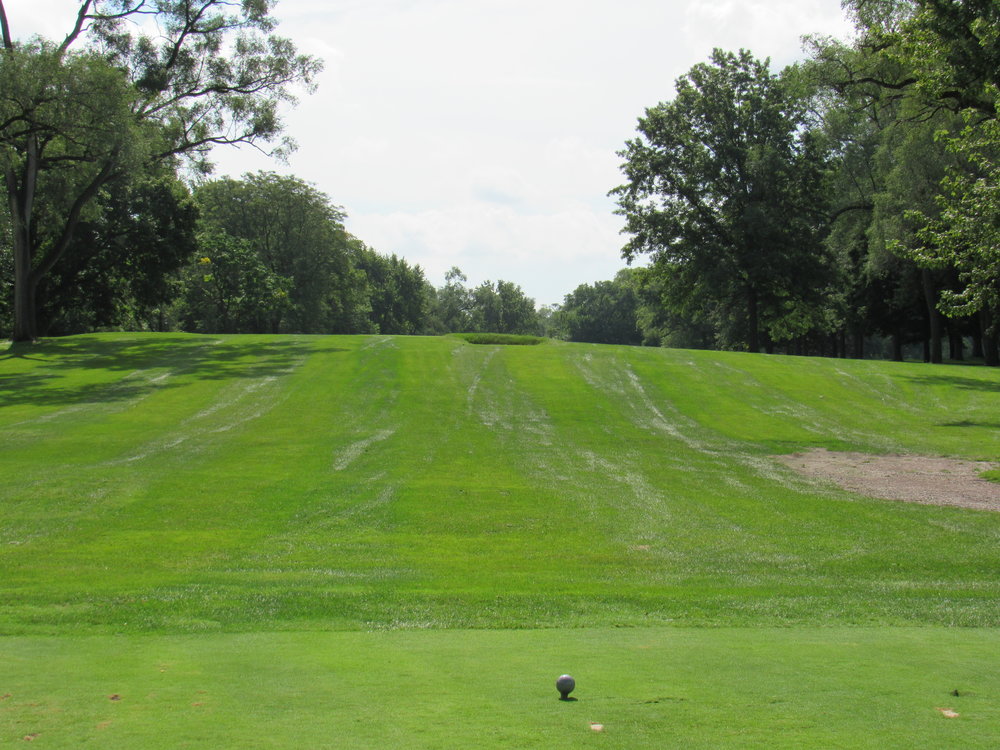
The blind tee shot over the hill bunker
-
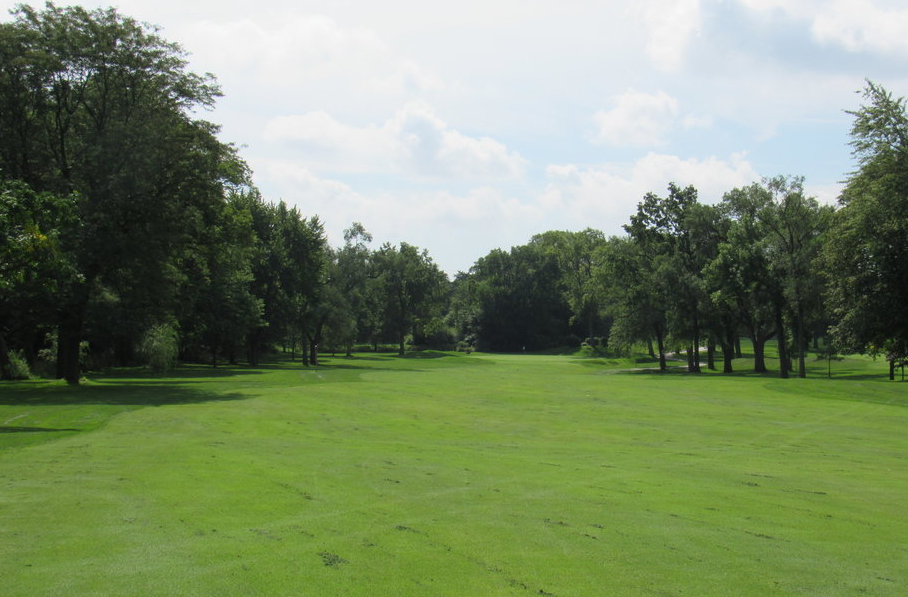
The downhill approach to the 17th
-
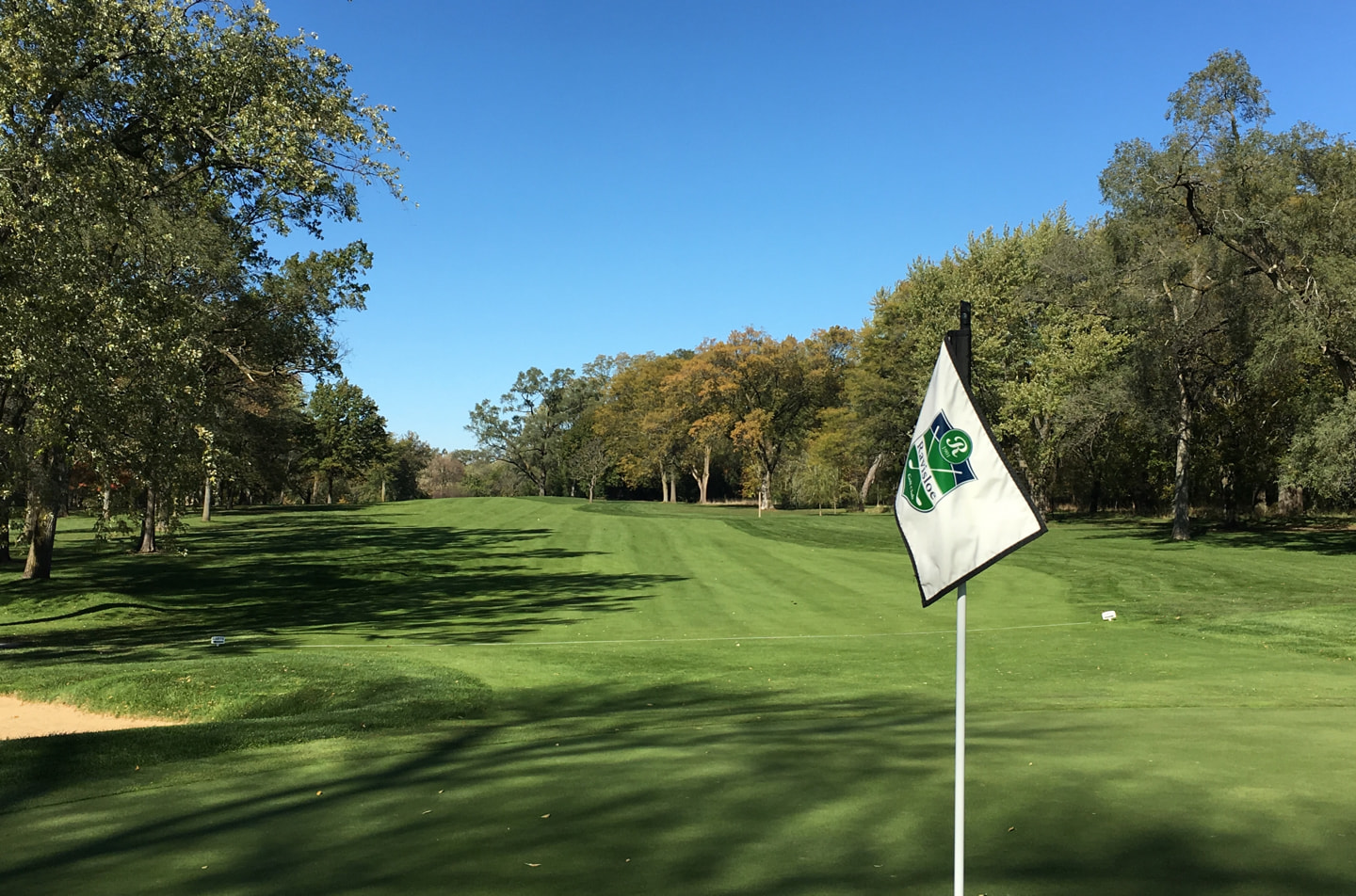
A final look back up this wonderful four par
HOLE #18 – 355 yards – par 4
The closer is a short par-4 which forces a decision – lay up short of the bunkers leaving a short-iron in, or play aggressively and try to thread the bunkers, leaving a pitch shot into a tricky little green that’s guarded by deep bunkers.. Laying up is the higher percentage play, with birdie still very much on the table to close your round.
-
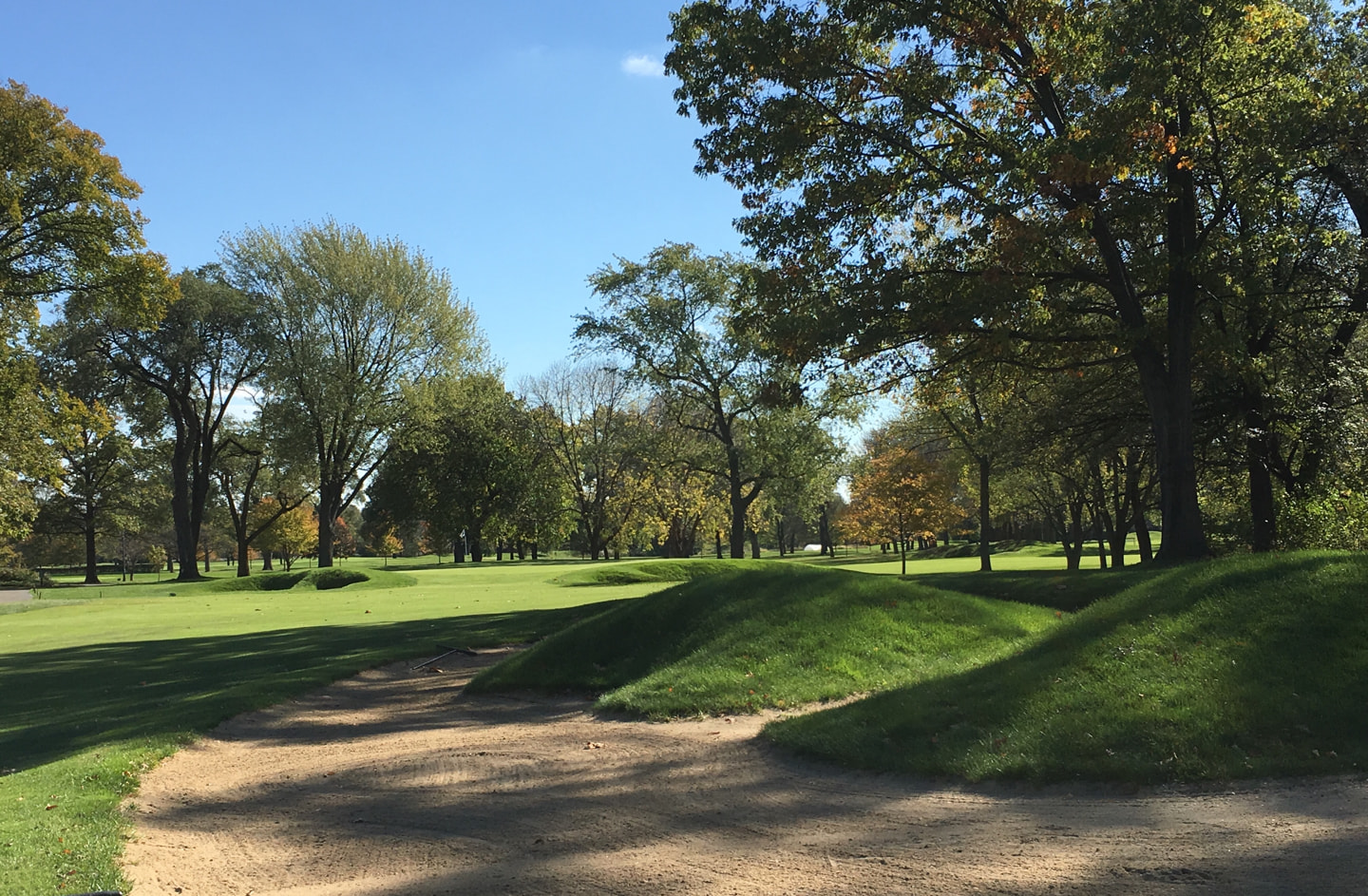
A last taste of artful Ross mounded bunkering
-
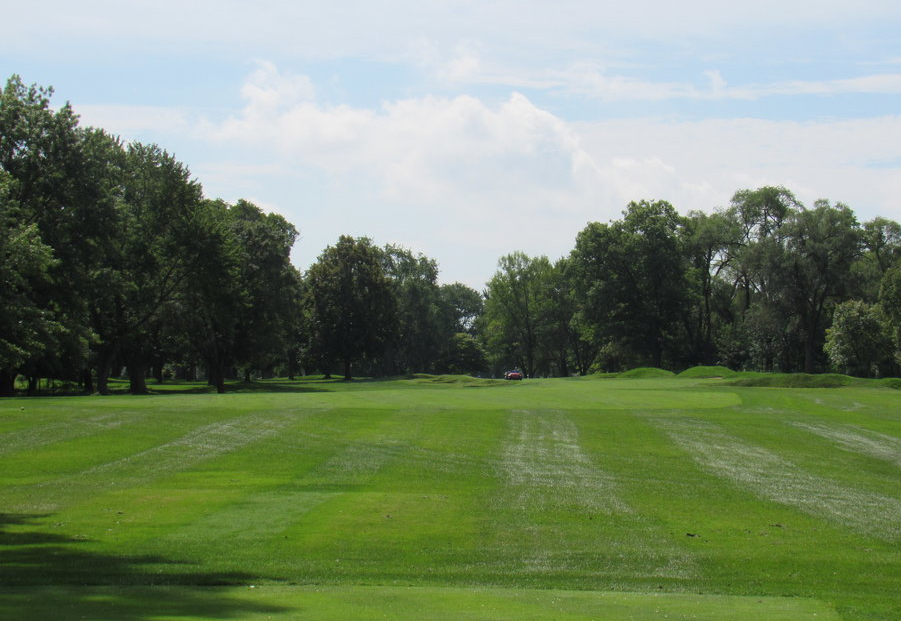
The tee shot on the closer at Ravisloe
-
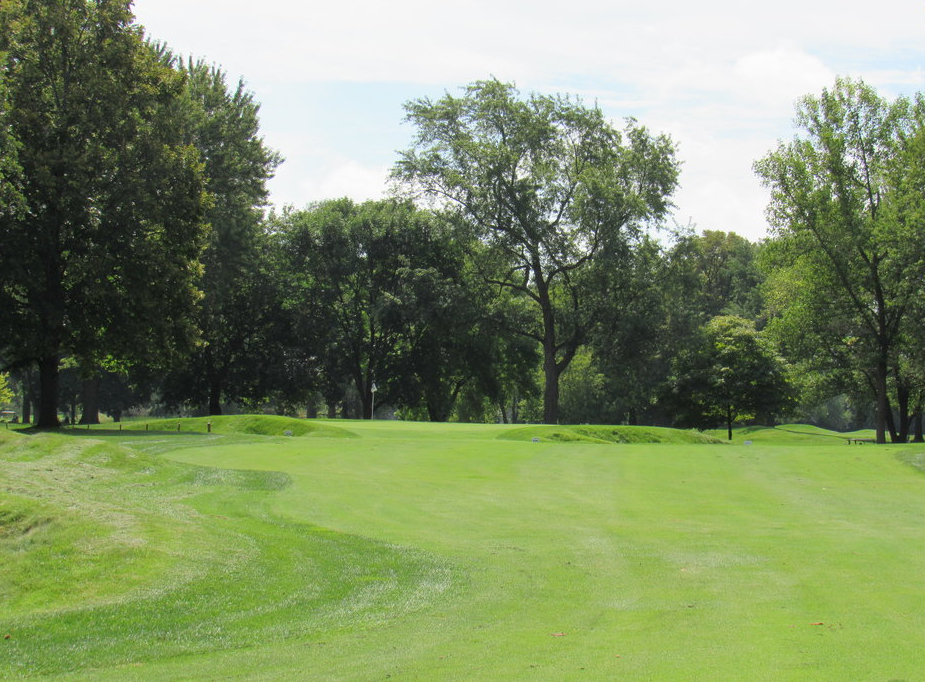
Approaching the final green
-
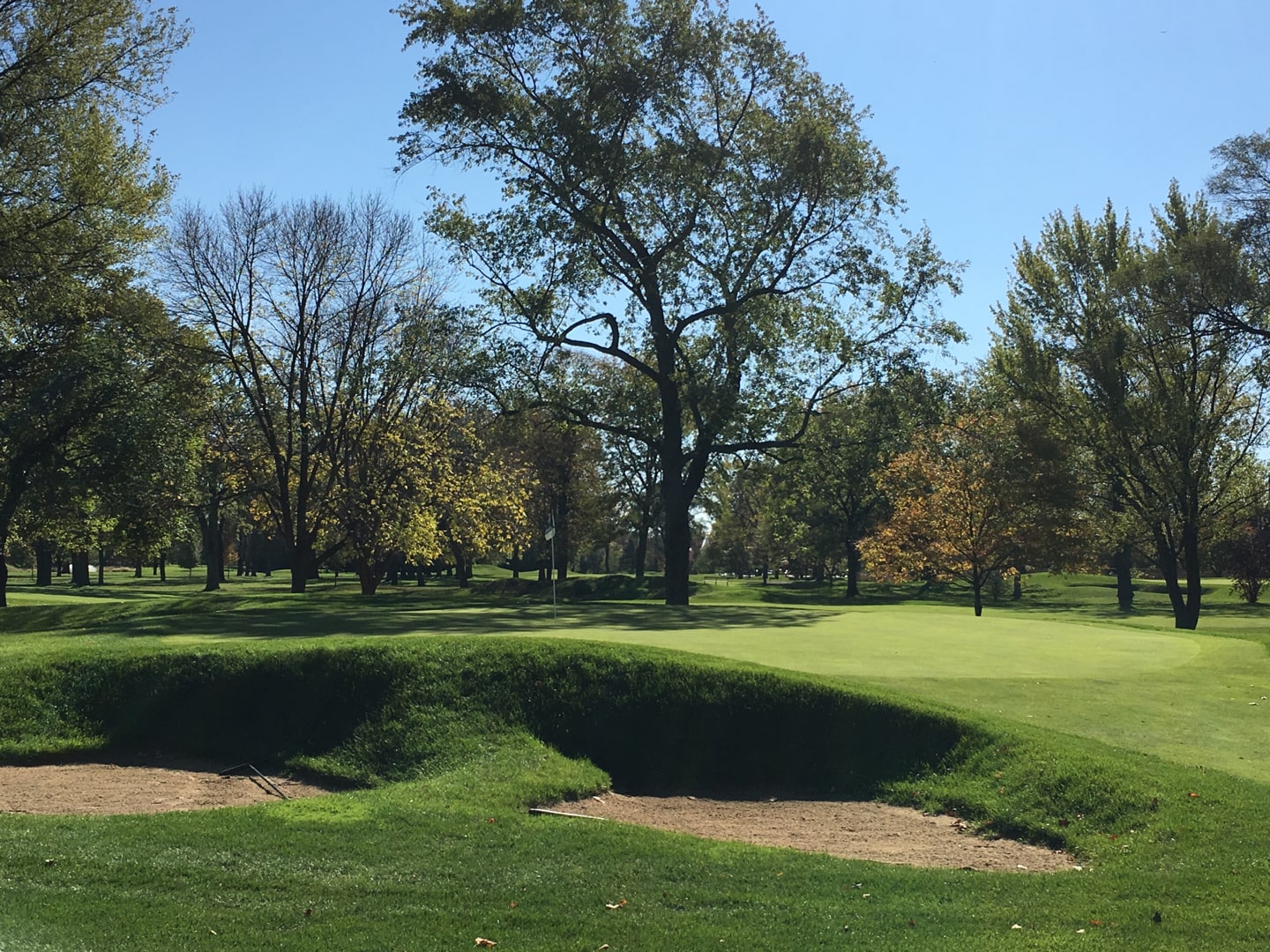
The bunkers at the 18th are to be avoided
There are public golf courses in Chicago that have more glamorous facilities, more picturesque settings, and much higher green fees, but none rival Ravisloe’s architectural brilliance. The course is short but Ross’s subtle design skills make it a good test of golf for a scratch player while being extremely playable for the average golfer. If there is a better set of par-3 available to the public golfer, we have yet to see them.
Ravisloe is a great course and our hope is that by removing trees and allowing it to play firm and fast, Donald Ross’s creation can truly shine. As it stands today though, it remains our favorite place to play public golf in Chicago, and our go-to recommendation. To learn more about affordable and architecturally interesting courses in Chicago click here
Sign Up for The Fried Egg Newsletter
The Fried Egg Newsletter is the best way to stay up to date on all things golf. Delivered every Monday, Wednesday, and Friday for free!


 by
by 
